
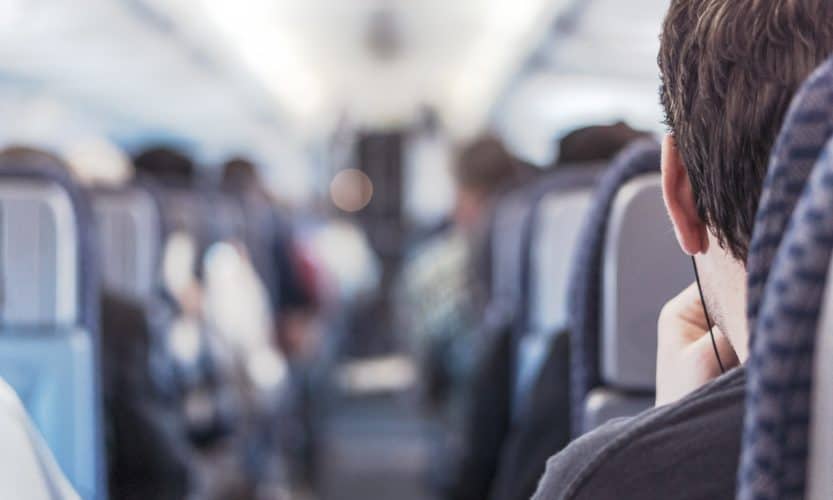
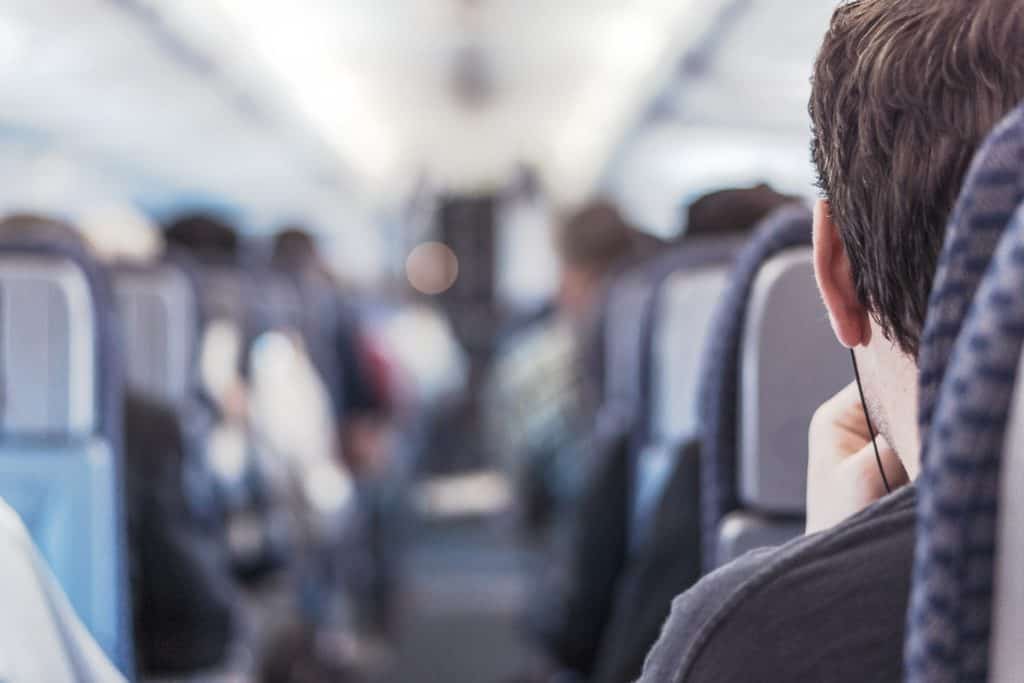
Everyone who has ever boarded a flight that lasted more than six hours will know that it’s not easy to stay sane. After all, you’re flying in a big metal bird at an altitude of over 10 km. However, there are some things you can do to make your stay in the metal bird more enjoyable – or at least less horrible. This is how to survive a long-haul flight.
In this post:
What to do during a long flight
How to stay healthy on a long-haul flight
How to stay comfortable on a long flight
If you take some small measures to change your cabin baggage around, you’ll go a long way to making your long-haul flight more pleasant. You just need to make sure to pack the right things in your cabin bag. After all, you don’t want to end up on a 12-hour flight only to realise that you’ve left your headphones in your checked baggage.
Also, don’t pack liquids over 100 ml. Just don’t.
I don’t care about airline regulations, I want to skip ahead
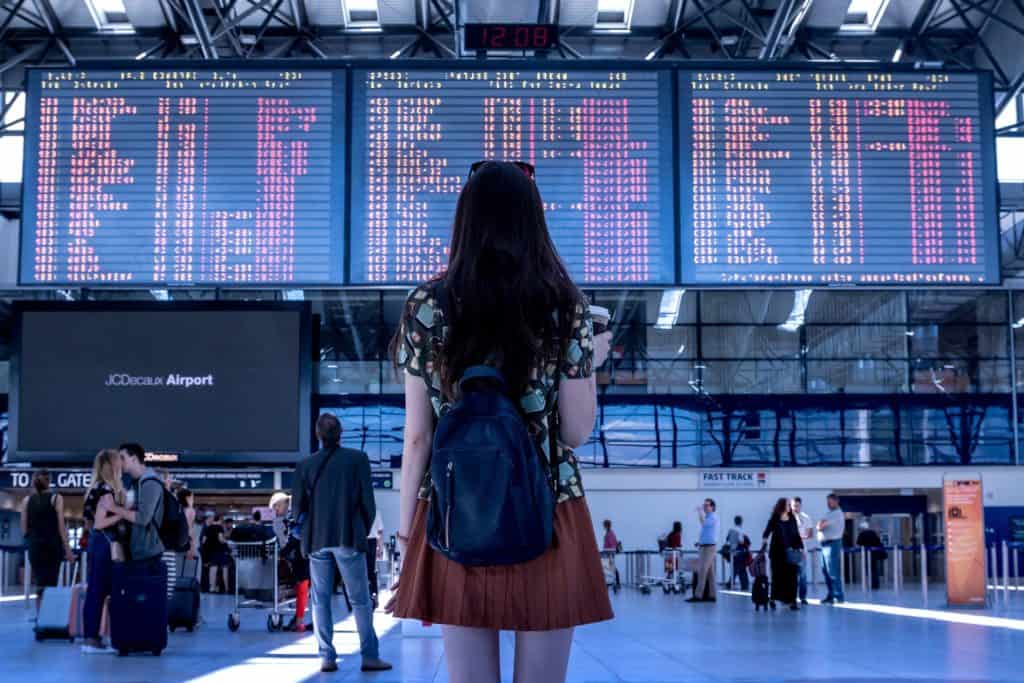
All airlines have regulations around cabin baggage. These policies usually regulate the maximum allowed size for your cabin baggage as well as the maximum weight.
Most traditional airlines usually stick to the following dimensions for cabin baggage: 56 x 45 x 25 cm. However, as more low-cost airlines pop up and become more popular, it’s important to keep in mind that these airlines tend to save money by using smaller maximum baggage dimensions and charging more for bags that don’t fit those dimensions. For that reason, you have to be extra cautious when you’re booking a flight with one of those low-cost carriers, because the extra fees can end up taking a considerable bite out of your budget.
For your convenience, here’s an overview of the cabin bag dimensions and max weight for most major low-cost carriers.
Disclaimer: this post was written and uploaded on 14 December 2018. This information may be outdated by the time you’re reading this. These regulations and policies reflect a passenger travelling in economy class or the carrier’s equivalent.
On Ryanair flights, you’re only allowed to bring one small personal bag (max. 40 x 20 x 25 cm) into the cabin, which must fit under the seat in front of you. For £6, you can add priority boarding and one more cabin bag (max. 10 kg), which can be stored in the overhead bins (providing the other bag fits under the seat). For £8, you can add a checked bag (max. 10 kg) which you must drop off at the check-in desk at the airport.
Bringing another bag that you haven’t paid for or bringing a bag that is too heavy will result in a £25 fee one way.
Vueling flights allow you to bring one piece of hand luggage (max. 55 x 40 x 20 cm, max. 10 kg). This bag can be stored in the overhead bins. You’re also allowed to bring another small bag or case (max. 35 x 20 x 20 cm) as well as a bag with purchases made at the airport. Both of these must fit under the seat in front of you.
If your bag is too heavy, too big or you bring too many bags, you will be charged €35 one way.
Norwegian Air travellers are allowed to bring one carry-on bag (max. 55 x 40 x 23 cm) and one small personal item (max. 33 x 25 x 20 cm) that fits under the seat in front of you. The combined weight of these two bags must not exceed 10 kg.
The fees for oversize or overweight baggage are steep at Norwegian. They can be seen in the screenshot below (and yes, that’s just one way).
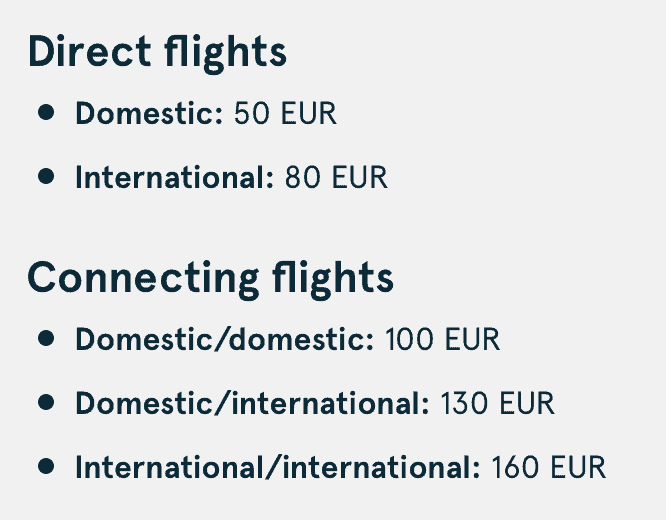
JetBlue allows its passengers to bring one carry-on bag (max. 55 x 35 x 22 cm) and one small personal bag (max. 43 x 33 x 20 cm) on board. There is no weight restriction on carry-on baggage on JetBlue flights.
I was unable to find information online about fees for oversize cabin baggage on JetBlue flights.
Southwest passengers can bring one carry-on bag (max. 60 x 40 x 25 cm) and one personal item (max. 46 x 34 x 21 cm) that fits under the seat in front of you. There is no specified weight restriction for cabin baggage on Southwest flights.
I was unable to find information online about fees for oversize cabin baggage on Southwest flights.
On easyJet flights, you can bring one carry-on bag (max. 56 x 45 x 25 cm, including wheels and handles). There are no weight restrictions but you must be able to lift it into the overhead locker, according to easyJet’s website.
If your carry-on baggage doesn’t fit in the size restrictions at the bag drop desk, you will be charged £37 to check the bag into the aircraft hold. If you only realise your bag is oversized at the boarding gate, you will be charged £47.
Wizz Air allows its customers to bring one carry-on bag (max. 40 x 30 x 20 cm, max. 10 kg) which should fit under the seat in front of you.
Wizz Priority travellers can also bring one extra trolley bag (max. 55 x 40 x 23 cm, max. 10 kg). Wizz Priority can be purchased online (€5 – €15) or at the airport (€25) and it’s non-refundable.
I was unable to find information online about fees for oversize or overweight cabin baggage on Wizz Air flights.
Now that all the boring stuff about baggage allowances, policies and regulations is out of the way, let’s take a look at what else you can do to make your cabin baggage more useful for a long-haul flight.
Though there are definitely similarities between the two, surviving a long flight is a little different from surviving a short flight. One of those differences is that you’ll probably want to be asleep for a portion of the long flight.
You can take some precautions and bring some items to make falling asleep on a noisy flight easier.
If you pack a decent sleep mask, some earplugs and a travel pillow, your odds of actually getting some sleep are already way better than that guy who’s trying to fall asleep with a sweater as a pillow.
Yes, that was me on my way from Frankfurt to Osaka. I’ll happily admit I wasn’t prepared for my long flight.
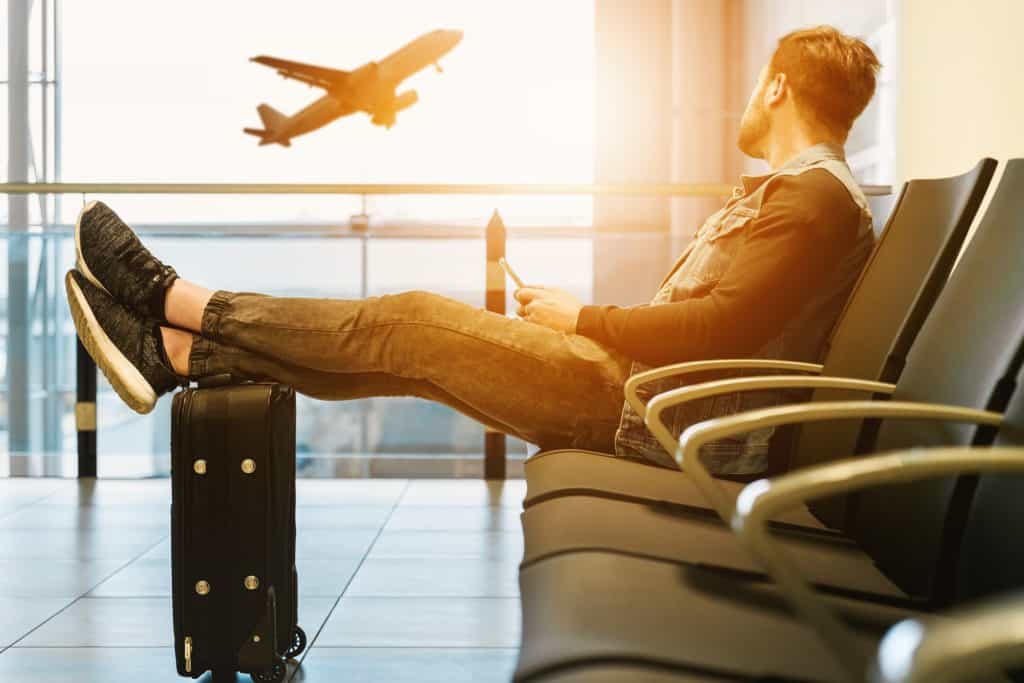
If you’re travelling with cabin baggage only, by all means, get as close to the weight limit as you can. However, if you also have a checked bag, you should consider keeping your cabin baggage as light as possible.
Now, I’m not saying that you can’t get away with throwing some clothes in a trolley that you use as hand baggage. I’m specifically talking about your ‘personal item’ here, assuming the airline you’re flying with allows you to bring one.
Only pack the essentials in your backpack / purse / whatever you’re using as personal item (keep reading to find out what the essentials are). The reason for this is that your personal items has to fit under the seat in front of you while you’re flying. So, the bigger your bag is, the less legroom you have.
And personal space really isn’t something you want to compromise on during a long flight, is it?
On the one hand, anyone who has ever been on a long-haul flight will be able to confirm that airplane food is, well, not the best. Especially in economy class. Granted, it gives you precisely the amount of nutrients you need to survive the flight, but let’s just call it what it is: airplane food is bad.
By the way, did you know that airplane food uses up to 30% more sugar or salt to make it taste like it would on the ground?
On the other hand, you don’t want to get a sugar rush after eating too many sweets, only to feel drained and puffy shortly afterwards.
The perfect solution for this problem is to bring your own snacks, but not just any snacks: to survive a long flight, you’ll need some slow-energy release snacks. These contain healthy carbohydrates that slowly release the energy to the body over a longer period of time.

Some examples of excellent snacks to bring on a long flight:
Nowadays, most planes that carry out long-haul flights are equipped with personal sockets for every passenger. That’s excellent news for the digital-style traveller, who spends his or her time listening to music and playing games on an iPhone.
Some essential electronics to bring on your flight:
Of course, I’m not saying you won’t survive a flight without all of these. Adjust the list according to your own taste and travel style.
What to do, what to do… Here are some things that will help you survive the boredom of a 12-hour flight.
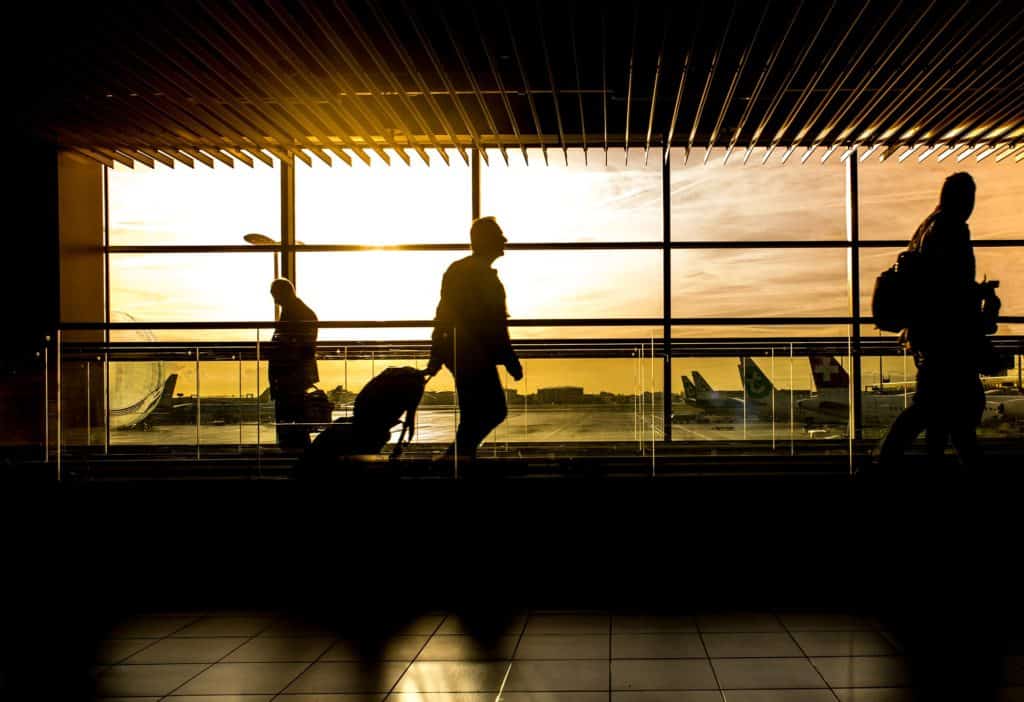
Chances are that your flight has some kind of night-time in it. Whether it’s night-time at your take-off airport, night-time in the time zone you’re arriving in, or something in between. Admittedly, the quality of sleep you’re likely to get on a plane isn’t going to be very high. But if there’s ever a time you can justifiably sleep to fight boredom, it’s a long-haul flight.
If you’re going to sleep on a plane – which isn’t an easy task, admittedly – you’ll have to be prepared to sleep. Obviously.

Bringing your own sleeping kit (remember: sleep mask, earplugs, travel pillow) to a long flight will go a long way to helping you sleep. Other than that, coming to the airport fairly well-rested also helps. I know, it seems counterintuitive, but trust me on this one.
Now, all that’s left for you to do is close your eyes and doze off. Sweet dreams!
Okay, so maybe you don’t feel like sleeping. Or your flight isn’t exactly at a time when you should be sleeping. In that case, sit back and relax, because there’s really nothing else worthwhile for you to do.
Here are some simple tips to help you fight boredom on a long-haul flight:
There are many things that can go wrong on a long flight, but you can only control so much. One of those things you are in control of is how much the airplane influences your health. Here are some tips to help you stay healthy during a long-haul flight.
One of the most common tips for people on a long-haul flight is to move around. If you’ve never been on such a flight before, you might think it’s weird to just get up in the middle of the flight, but it really isn’t. People move around all the time, and if you’re just taking a walk to get your blood flow going again, nobody is going to give you any weird looks.
Stand up and walk around the aisle at least every two hours. This will help you fall asleep more easily and it will prevent blood clots.
Other than that, you can also do small exercises in your seat if you don’t feel like getting up or if you’re stuck in a window seat and the passenger next to you is fast asleep. Here’s a list of easy exercises to do on an airplane.
One last consideration to make on a long-haul flight is whether you want a window seat or an aisle seat. A window seat, on the one hand, will graciously allow you a chance to fall asleep without being disturbed by other passengers. You’ll also be able to look outside more easily, if that’s what you’re into. An aisle seat, on the other hand, gives you more leg room and easier access to the aisle in case you want to get up or go to the bathroom.
In the end, it all comes down to personal preference and priorities.
As you’ve probably realised by now, flying dehydrates you. The air circulation system in an airplane causes the humidity to be around 10-20%. Compare that to the regular 30-60% on the ground and you’ll know why you need to keep drinking water.
Professionals recommend you drink about 250 ml (8 oz) of water for every hour you’re in the air. Also, if you can help it, avoid any kind of alcohol. It tends to dehydrate the body as well, however counterintuitive that might seem.
Deep vein thrombosis (DVT) is the formation of blood clots in deep veins, such as the ones in your legs. It doesn’t always come with visible symptoms, but if it does, these are the most common ones:
Since sitting on an airplane for extended amounts of time (ahem, such as a long-haul flight) slows the blood circulation, it increases the risk of DVT.
Some things you can do to prevent DVT on a long flight:
Now. You’re staying healthy, you’re not drinking too much alcohol, you’ve got your movies ready to be binged and you feel like you can sleep for hours.
How do you stay comfortable for a long amount of time with relatively little space to move around? Well, here’s how.
This goes without saying, really. If you want to be comfortable on a long flight, you’re going to have to wear comfortable clothes. I’m thinking simple shirt, sweatpants, sweater and sneakers. How’s that for a comfortable alliteration, huh?
Of course, you might have to compromise on your fashion sense for this plane ride, although some people want to convince you otherwise. I’d say the sacrifice is more than worth it if it means you’ll get a more enjoyable flying experience in return.
If you’re really worried about not getting the comfort you need in economy class, why don’t you consider upgrading to premium economy (or even business class)?
There are quite a few ways to score an upgrade to premium economy.
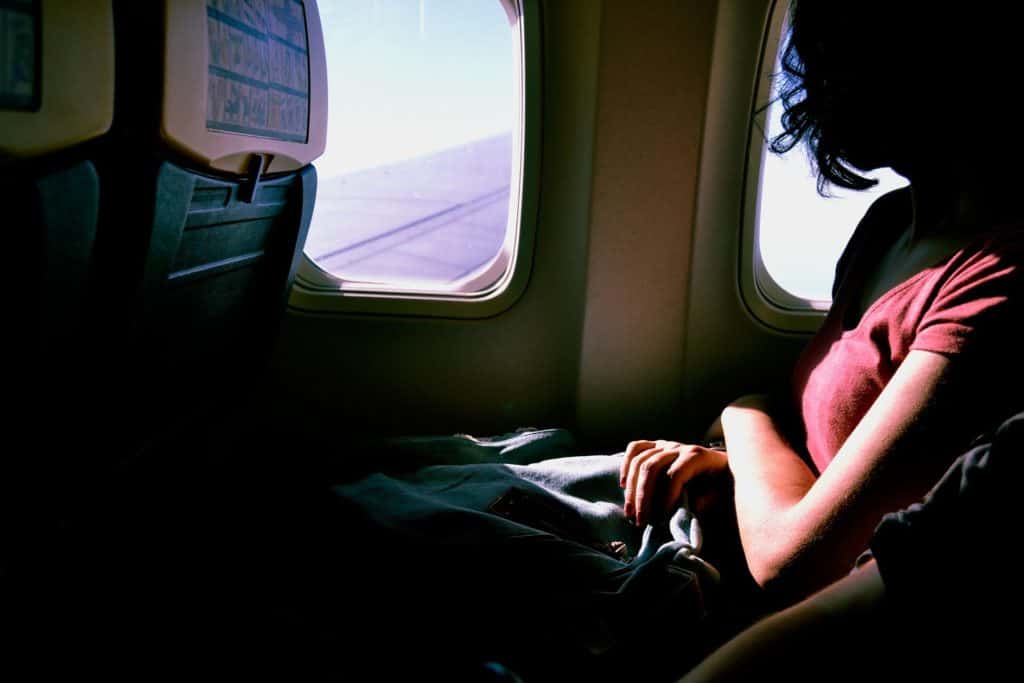
The first, and most efficient, is to save up air miles and pay for the upgrade with the miles you’ve collected. The general rule for most airlines is that you use your airline miles to upgrade one class from your original ticket. That means that you can upgrade to premium economy with an economy ticket or upgrade to business class with a premium economy ticket.
For more information on how to upgrade using air miles, just google “[Airline name] upgrade with miles”, as the rules are different for each airline.
You could also just pay for an upgrade if you feel like it’s worth it. In other words, if the value you attach to upgrading from economy to premium economy is greater than the price you’re paying for the upgrade, you should do it.
Many major airlines use a platform called Plusgrade that allows passengers to bid for an upgrade. It’s essentially like a blind auction, where you don’t know how many other people are bidding for the same thing and you have no idea how much they’re willing to fork over for that same upgrade. Keep in mind that there are many terms and conditions for auctions like these, so it’s a good idea to read up on your specific airline before participating.
If your flying time is flexible, you might want to consider volunteering to take a later flight.
Since airlines nowadays regularly overbook flights to compensate for empty seats left by passengers who don’t show up, you might be bumped from a flight.
What this means is that the airline will look for volunteers to take a later flight. At first sight, this might seem like a bad deal, but once you learn that it comes with advantages like lounge access, upgrades and flight vouchers. In the United States, new Department of Transportation rules state that airlines need to pay passengers that were involuntarily bumped up to $1,300.
Still think being bumped off a flight is such a bad thing?
As a budget traveller, you might think cheaper is always better. Well, I’m here to tell you – drumroll – it’s not. Finding cheap transport is fun and can be very useful, but sometimes it’s better to spend a little more money for a better flight.
Although you might pay a bit more for a flight with better hours, you’ll save time. No, you won’t have a shorter flight, but what you will do is spend less time recuperating from your long-haul flight. This means that you’ll have more time on the ground to deal with jet lag.
Have you ever been on a long-haul flight? What was your experience like? How many of these tips did you use?
Thanks for reading!
-S
PIN IT!



This is my first interview in a new series of blog posts called Free Spirits Interviews. In these blog posts I interview insiders of the nomad and/or expat business. I can’t wait to share them all with you and give you some insight into the people I interviewed. In this first interview, I ask Lauren from Never Ending Footsteps some questions about life as a nomad and settling down after years of travelling.
I sincerely hope you enjoy these posts as much as I do.
Without any further ado, here’s our first guest!

Lauren Juliff was born in London, England, and has spent the past seven years travelling the world and venturing outside of her minuscule comfort zone. She was once afraid of buses, small talk, rice, and most anything you can think of. But through travel, she has overcome anxieties large and small in a quest to prove to a former Lauren she can do anything she sets her mind to. Lauren runs the travel blog Never Ending Footsteps, where she writes about her frequent misadventures. She is also the author of the travel memoir How Not to Travel the World.
Hi! I’m Lauren and I’ve been travelling around the world for much of the past seven years.
At age 23, after five years of saving, I quit my job and bought a one-way ticket out of the U.K. I’d always dreamed of travel, and decided to do so after graduating college. I figured that it would be the one time in my life when I’d likely be free of ties. I planned to travel for a year or two — essentially until the point when my savings ran out.
My travel blog, Never Ending Footsteps, was a way to keep friends updated on my adventures around the world. I never expected to one day turn it into a business. After six months of travel, though, I was unexpectedly making enough money from it to travel indefinitely in cheaper regions of the world. That’s exactly what I decided to do. I met my boyfriend, Dave, through my travel blog and for the next five years, we travelled the world together.
We decided to stop because continuous travel was no longer fulfilling for us. We were sick, exhausted, overweight, and fed up, craving a home base to return to between trips. Portugal sounded like a good place to live and we had friends there, so we signed a lease on an apartment within a month of first stepping foot in Lisbon.
For the next two years, I merged expat life with travel, spending six months of each year living in Lisbon and six months travelling. This felt like the perfect balance for me, and just having an office at home was enough for me to triple my travel blogging income. I had friends, I had a more settled life, and I felt healthier than ever. I was still exploring the world, but I had a base to return to between trips, which helped keep me sane.
Eventually, I decided a move to the U.K. was on the cards. I didn’t feel as though I belonged in Portugal, struggled with the language and cultural barrier, and craved an easier life. I moved to Bristol — a brand new city to me, as I grew up in London — six months ago, and so far, it feels like the best decision I’ve ever made.
After five years, full-time travel began to have more downsides than up.
A life of continuous travel is also a life of continuous goodbyes. I was meeting so many wonderful people on the road, but having to say goodbye several days later when we each moved on to our next destination. That was disheartening to have to go through. Not only that, but it also meant that I had a shallow relationship with everyone I met. After five years, I realised I had a ton of acquaintances spread out across the world, but nobody I would consider a best friend.
I also found full-time travel to be unhealthy for me. It’s rare to have access to a kitchen when you travel. That means eating out for three meals a day for five years straight. Food poisoning brought me down regularly, and I was taking an average of four courses of antibiotics a year. The lack of stability combined with little exercise and a poor diet resulted in my anxiety disorder returning and I began to have panic attacks.
I discovered that you can have too much of a good thing. The more I travelled, the more it would take to impress me. Waterfalls used to amaze me, but once I had seen 60 of them? It would take a hell of an impressive one to leave me in awe.
Finally, I found it tough to have any hobbies. I wanted to start weightlifting. to learn how to knit, to try rock climbing. It was near-impossible to consistently pursue a hobby that wasn’t travel-focused. I travelled, I planned travel, I wrote about travel, I read about travel, I talked about travel, I hung out with other travellers. I was such a one-dimensional human.
So, the decision was definitely made: we needed to find a base.
We decided to move to Portugal because we were desperate to stop moving and that was the next destination on our list.
We didn’t put any real thought into it.
My boyfriend and I both have British passports, so living somewhere in Europe made a lot of sense. Besides, we had some digital nomad friends already living there. Portugal is inexpensive, sunny, and with a thriving start-up scene. It made a lot of sense to live there.
We turned up in Lisbon having never been there before, and decided to live there two days later.
We were so desperate to stop travelling that I would have moved anywhere at that point, to be honest.

Pretty much.
After two years in Portugal, Dave and I realised that it didn’t feel like a long-term home for us. As a consequence, we started to consider new countries.
Portugal is wonderful, but I’m not Portuguese and I’ll never be Portuguese. I love immersing myself in unfamiliar cultures when I travel, but that’s the opposite of what I want from a home base. Also, trying to deal with bureaucracy in Portugal was horrendous. I just didn’t think expat life was something that worked for me.
Every time I returned home, it felt like home in a way that nowhere else in the world did. I felt like I belonged, and I wanted that feeling every day. I didn’t think I’d ever feel that way in Lisbon.
It was a mutual decision and fortunately, we were both equally ready to find a base. Dave also struggled with many of the points I mentioned above. He was feeling jaded by travel, he wanted to pick up other interests, he was fed up with not having any real friends, and the unhealthy lifestyle had left him 20 kgs overweight and feeling terrible.
The fact that we both wanted to stop travelling made making the decision a lot easier than it might have otherwise been.

It feels amazing to return home, and I’m so happy. It really doesn’t feel all that different to my expat life, or even my full-time traveller life, to be honest.
Because I still work online and in travel, I still have just as much freedom as I did when I travelled as a digital nomad, and I still take full advantage of it. It’s not as though I’m not grounded and unable to leave. If I want to head to India next week, I can buy a plane ticket and do exactly that. I still travel for four months of the year.
Additionally, I chose to move to Bristol in the U.K., which is a brand new city for me. Even though I’m living in the country I was born in, I know little about Bristol, and I’m getting to discover it as a traveller as well as a resident.
I’d take it with a grain of salt, simply because I don’t believe anything can change everyone who does it. And I’m saying that as someone who experienced an enormous amount of transformation through travel! Some people travel and hate it; some people travel and have no desire to learn or change; and some people travel and come out a worse person because of it.
I think as well that by having that mindset, you’re saying that only people who are rich enough and privileged enough and able-bodied enough to travel have access to that transformation.

I think the ease with which you can carry out basic day-to-day tasks feels strange. Drinkable tap water and consistent access to hot water showers are both things I’ve yet to grow tired of. Being able to have a conversation with anybody I run into makes life so much easier, especially when it’s anything to do with the government. That was a nightmare in Portugal!
The technological advances have been shocking, too — contactless payments, the fact that nobody uses cash anymore, online grocery deliveries. I feel like I’m living in the future, because so many of the countries I travel in are cash-only. And sure, there were things like online delivery in Portugal. But there was always a language barrier, so everything took 10 times longer.
Living as an expat or travelling full-time comes with a certain baseline level of cognitive load. You have to communicate with people who speak a different language, understand the culture, navigate an unfamiliar city, guess at what food you’re eating. By eliminating all of that, I feel less exhausted. It almost makes me blind to the downsides of life in England. Everything is so easy that I simply can’t find anything to complain about!
The importance of leaving your comfort zone. When you travel, every day on the road presents challenges. And since there’s nobody else to fall back on, you have to leave your comfort zone in order to have a successful trip. And it’s leaving your comfort zone that helps you conquer your fears and prove you’re more capable than you might have otherwise believed.
Anxiety used to prevent me from doing anything that scared me, but travel forced me to do everything because I had no other option. Trying new things on a daily basis transformed my life, as I slowly realised the things that had made me nervous weren’t so intimidating after all. I learned that I was more than capable of doing them, and surviving a situation if my worst case scenario actually happened. Within a few week of starting to travel, my panic attacks faded away. I fell in love with trying new foods, I gained confidence and social skills, and a love of challenging myself to do the things that make me nervous.

I honestly can’t remember!
When I was a nomad, I usually spent two months catching up with family and friends in the U.K. every year. That way, it wasn’t like I had been away from England seven years straight and had missed so much. I regularly spent time back home, so hadn’t missed any particular food or meals.
Sort of.
I started to have panic attacks when travel started making me unwell. My anxiety was more of a warning sign that I needed to stop, rather than the reason behind me stopping. If that makes sense!
In the six months before I moved to Portugal, I suffered panic attacks every single day on the road. And they’d only stop when I thought about finding a home. That was a pretty major indication that I needed to make a change.
Very rarely.
I think a big part of that comes from choosing to continue to travel since moving to the U.K. My life isn’t all that different, as I’ve designed it to retain the freedom and spontaneity I loved while I was a nomad. If I want to fly to Brazil tomorrow, I can still do exactly that.
I actually took a six-month-long trip earlier this year and honestly? I didn’t love it. By the time I was about two months in, I was tired, unwell, and missing having a kitchen and office. I struggled to work on my travel blogging business, I missed having a community around me, and I found it tremendously difficult to maintain a healthy lifestyle.
That trip showed me that the life of a nomad is no longer something that would make me happy. When I have a base, I can still experience the positives to life as a nomad (travel! the freedom!), but I get to avoid all of the downsides that drove me crazy and made me sick.

Yes! I still love to travel, and now that I’m based in the U.K., I aim to spend four months of every year out of the country and exploring new destinations.
My next trip is in January. I’m going to be spending 10 days in India, 10 days island-hopping in Thailand, and then a few days in Qatar. India and Qatar are going to be brand new countries for me, and I’m excited to finally check them out!
Again, I’d like to thank Lauren very much for answering all of my questions and for allowing me to get a behind-the-scenes peak at what life as a nomad is like – the positives AND the negatives.
You can follow Lauren and her Never Ending Footsteps, Facebook, Instagram, Twitter and YouTube.
PIN IT!

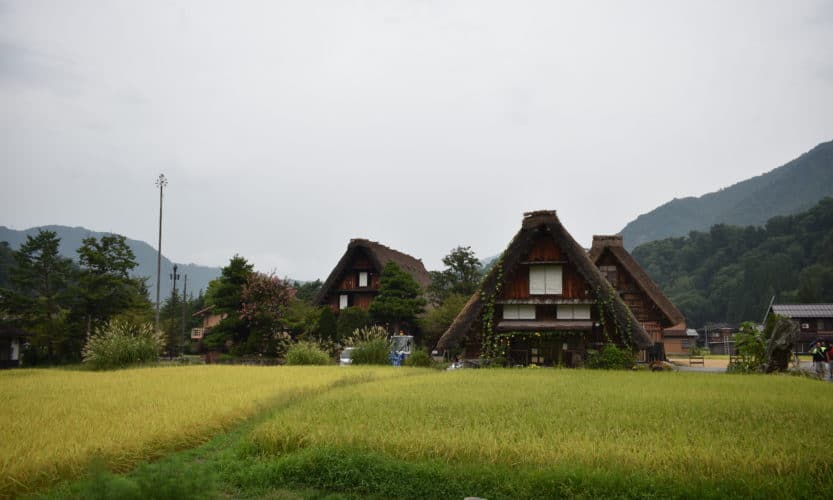
Japan tends to be seen as a daunting country that is filled with megacities where millions of people live. During your visit to Japan, you might want to leave those energetic cities behind for just a day and escape into the countryside. If that’s the case, the mountain village called Shirakawa-go is the perfect day trip destination for you.
Shirakawa-go is a historical mountain village located within the city of Shirakawa, in central Japan (Gifu Prefecture). The village is mostly known for its traditional farmhouses with thatched roofs, constructed in the gasshō style.
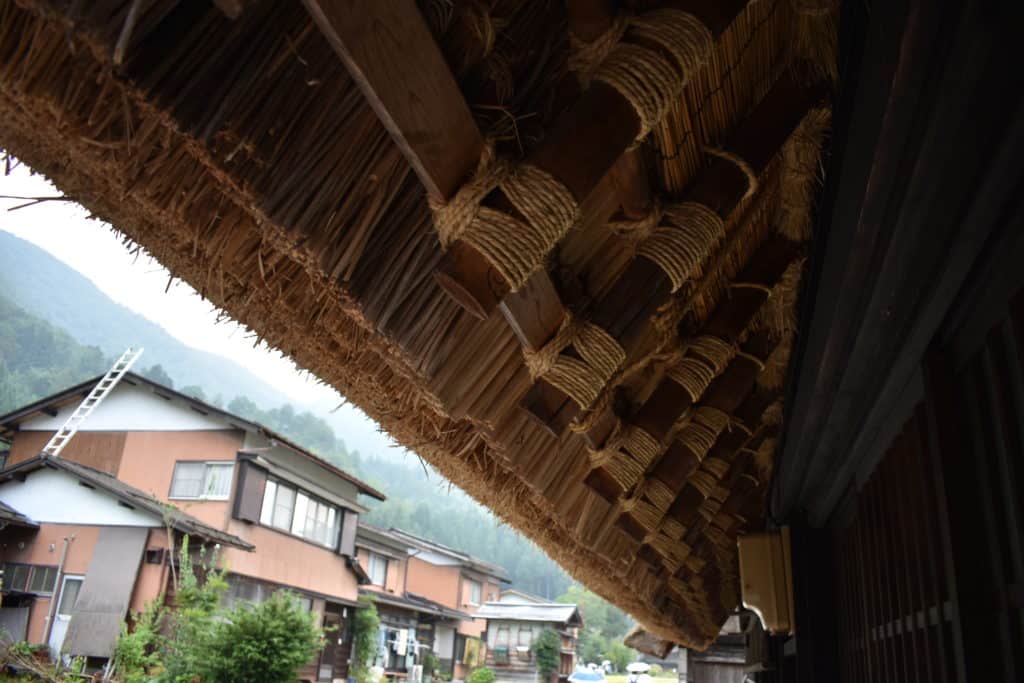
Shirakawa-go, just like its neighbouring village Gokayama, heavily depends on seasonal tourism for its income. The villages are located in a remote valley, surrounded by rugged mountains. This valley is known for its heavy snowfall in the winter months. Both villages became UNESCO World Heritage sites in 1995.
Yes, you could rent a car and drive to Shirakawa from wherever you are staying. However, car rentals in Japan tend to be more expensive than elsewhere (and much more expensive than using public transport) and they’re a huge pain when you’re travelling in and around big cities. And I’m not even going to mention finding a parking spot.
If you can, avoid renting a car and take public transport instead. It’s usually a hell of a lot cheaper, it’s easier and it’s better for the environment.
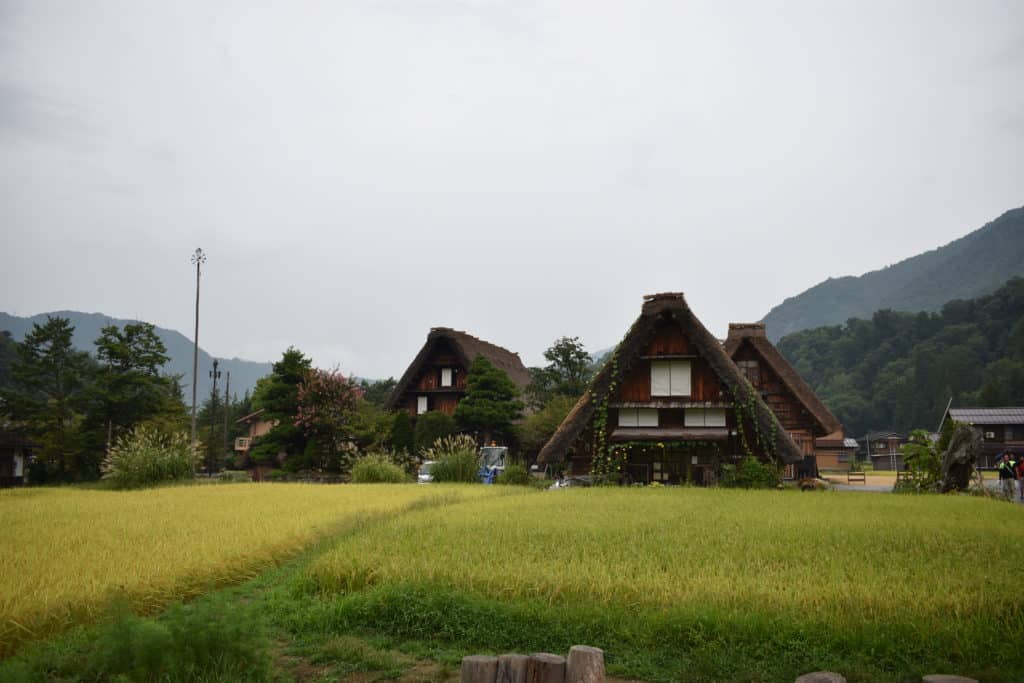
Crossing long distances by public transport in Japan is not that difficult, once you get an idea of how it all works. First off, I highly recommend you get a JR Pass. This pass is only available to foreigners visiting Japan and it covers all JR trains and some extras like a ferry to Itsukushima. It might seem expensive at first, but it’ll still be cheaper than paying every train individually if you’re staying for at least a week. Yes, the trains in Japan really are that expensive.
You might still be confused as to how to interpret the train system in Japan, but it’s pretty easy to get the hang of. Just click the link and read the information about trains in Japan (the page says Osaka, but it’s the same throughout the country).
One of the closest major cities to Shirakawa-go is Kanazawa, which means it’s the perfect basis for a day trip.
Take the Hokutetsu Bus from bus stop 2 at the bus terminal of Kanazawa Station (East Gate) bound for Shirakawa-go. The bus ride will take about 1 hour and 20 minutes. A one-way ticket costs 1,850 yen (about €14.50 / £13 / $16.50) for adults and a return ticket costs 3,290 yen (about €25.50 / £23 / $29). Tickets can be booked at the Kanazawa Station Transport Information Center.
From JR Toyama Station, take the Nohi / Hokutetsu / Toyama Chiho Tetsudo Bus bound for Shirakawa-go. The bus ride will take about 1 hour and 30 minutes. A one-way ticket costs 1,700 yen (about €13 / £12 / $15) for adults and a return ticket costs 3,060 yen (about €24 / £21 / $27). You can make online seat reservations.
From Nagoya Meitetsu Bus Center, take the Gifu Bus bound for Shirakawa-go. The bus ride will take just under 3 hours. A one-way ticket costs 3,900 yen (about €30 / £27 / $34.50). You can make online seat reservations.
Take the JR Thunderbird limited express train from Osaka Station to Kanazawa Station. In Kanazawa, transfer to the Nohi / Hokutetsu Bus bound for Shirakawa-go. The whole trip will take about 4 hours. A one-way ticket, assuming you have a JR Pass to cover the cost of the Shinkansen, costs 1,850 yen (about €14.50 / £13 / $16.50) for adults and a return ticket costs 3,290 yen (about €25.50 / £23 / $29).
For travellers coming from Kyoto: take the JR Thunderbird limited express train from Kyoto Station to Kanazawa Station, and then transfer to the same bus mentioned above.
Since the travel time from Kyoto and Osaka to Shirakawa is so long, you might want to consider staying in Kanazawa for a night to make the whole experience a bit more pleasant and make your schedule less packed. You might also want to reconsider a day trip to Shirakawa altogether if you don’t think you’ll be able to deal with this.
From Tokyo Station, take the Hokuriku Shinkansen bound for Kanazawa and get off at Toyama Station. There, transfer to the Nohi / Hokutetsu / Toyama Chiho Tetsudo Bus bound for Shirakawa-go. The whole trip will take about 3 hours and 30 minutes. A one-way ticket, assuming you have a JR Pass to cover the cost of the Shinkansen, costs 1,700 yen (about €13 / £12 / $15) for adults and a return ticket costs 3,060 yen (about €24 / £21 / $27). You can make online seat reservations.
Again, you might want to consider staying in Kanazawa or not doing this day trip from Tokyo because of the long travel time.
Since the village itself isn’t very big, the most logical way to get around Shirakawa-go is on foot. Besides, walking through this town will be the best way to experience what it really stands for.
Other than walking around the quaint streets, there’s also a vantage point up one of the mountains. You can walk all the way up there through a walking trail through the forest (caution: this trail is closed in heavy snow), but we saved some time – and energy – by taking the bus up to the viewpoint.
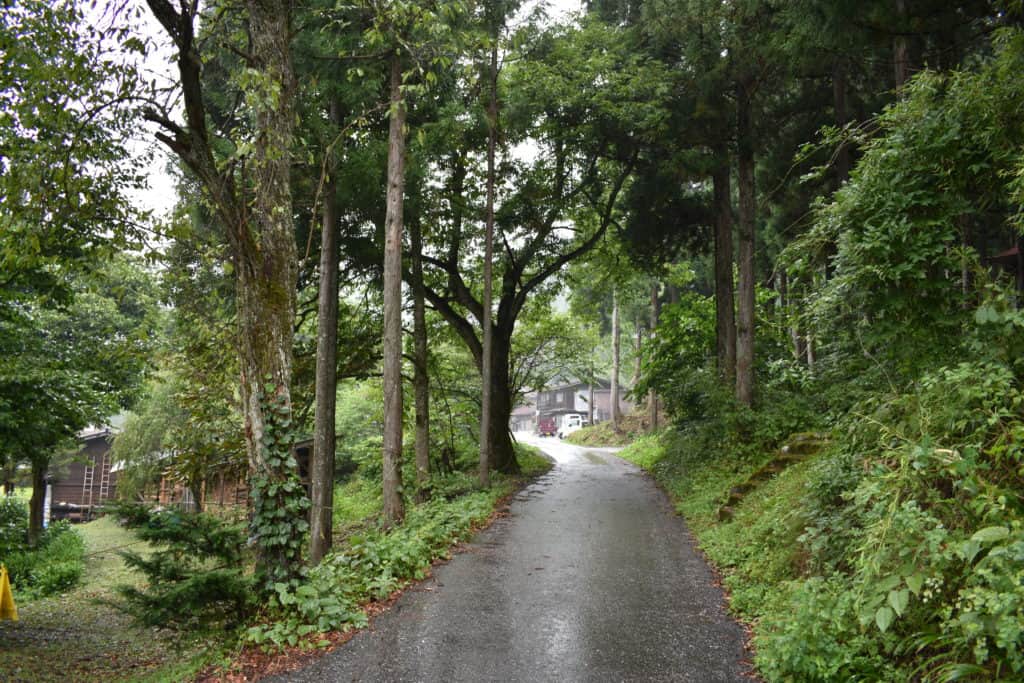
The bus stop for the shuttle bus is located right in the middle of the village, on the main road (which is closed to traffic between 9 am and 4 pm every day. It’s very easy to find the shuttle bus. A return trip will set you back 200 yen and the bus runs 3 times every hour.
Do you want to be transported back in time? Go to Shirakawa. Have you ever wondered what traditional Japanese architecture looks like? Go to Shirakawa. Do you want to hear the birds sing and see the snow fall in a quaint mountain village? You guessed it: go to Shirakawa.
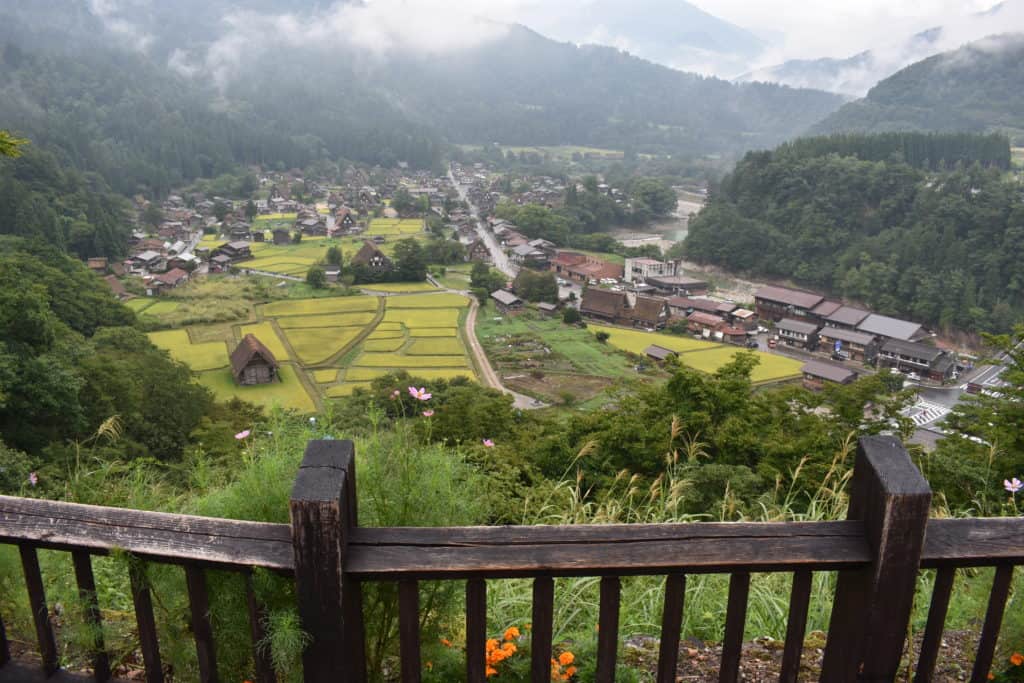
Here are some things that make the day trip to Shirakawa-go worth it:
As I mentioned above, it’s very easy to get to the observation deck where you can get a magnificent view of the village and the river that runs through it. It’s more than worth it, even if it’s just for the Instagram pictures.
Shirakawa-go is one of those destinations that can be visited at literally any time, depending on your personal preferences. Here’s a quick useful overview of what happens when and when you should plan your visit to Shirakawa.
The village lights up in the winter, which leads to gorgeous views. It’s arguably the most popular season to visit Shirakawa-go, but that also means that there are more tourists among you.
Recently, the popularity of this light-up event has even caused the city to limit the number of visitors they allow into the village to still be able to ensure a pleasant experience for everyone.
By the way: the reason why the huts and houses in Shirakawa-go are constructed with steep thatched roofs is because that construction is able to handle large amounts of snow, which the valley is known for.
Let me paint you a quick word picture. The thatched roofs of a mountain-surrounded valley village and cherry blossom trees. That’s it. That’s the whole picture. Because it’s all the reason you need to visit Shirakawa-go during spring.
While summer is probably the least popular season for this tourist attraction, it also means that there won’t be as many other tourists there with you.
But still, it can be very impressive to visit the village under a clear summer sky, with all the flowers and trees around the village in full bloom. Also, it’ll be easier to take pictures of the picturesque scenery with this summer lighting.
One of the best places to really experience what autumn is like in Japan is without a doubt Shirakawa-go. In the village, you can marvel at all the maple trees in full glory with their reddish brown autumn coloured leaves.
I won’t even have to convince you with any more words after you check out these pictures by Stewie Overseas.
We visited Shirakawa-go just before the autumn, but the weather was more than autumn-ish. It was cold and it was raining, but the village was still enchanting AF.
Have you ever been to Shirakawa-go? What did you think of it? If you haven’t been there, which season would you prefer? Let me know in a comment! I’d love to hear from you.
Thanks for reading!
-S
PIN IT!
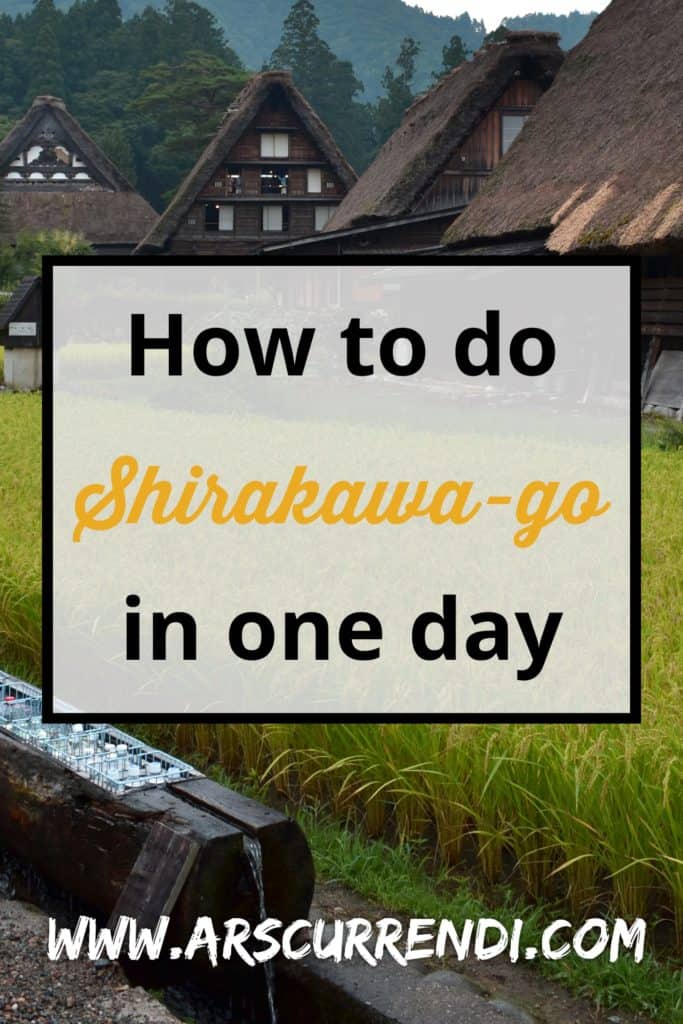


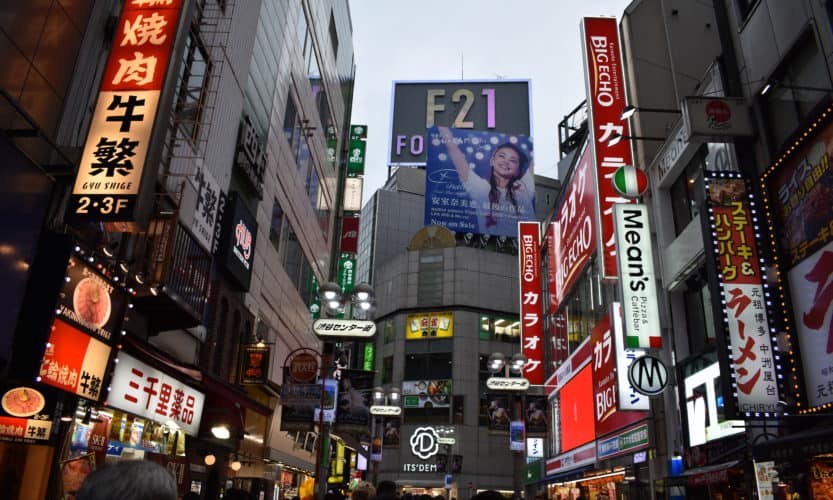
Japan, often known to the outside world as one of the most modern countries in the world, is a country that most people are either ecstatic or indifferent about. Seeing as my dad often had to go to Japan for work and told us stories of his travels, my sister and I were always very excited about visiting the country ourselves one day. In this blog post, I’ll share our reasons for visiting Japan and my ABC of our visit to Japan with you.
Latest update: 2 July 2019
Visiting Japan has been a dream of my sister and I for as long as I can remember. This summer, we finally got to board the airplane bound for Osaka and we lived out our Japanese dreams.
I hear you wonder. “But why Japan? Surely there are other beautiful destinations that are closer by and less expensive to visit?” Well, yes. But we had a few reasons for preferring Japan over any of these destinations.
It might not seem like this, since it’s basically an island at the other side of the world. At least if you’re from Europe. However, flying to Japan was a lot easier than you might expect.
What we did is this:
For a destination that is 9,300 km (5,800 miles) away from home, that seems like a reasonable travel itinerary, right?
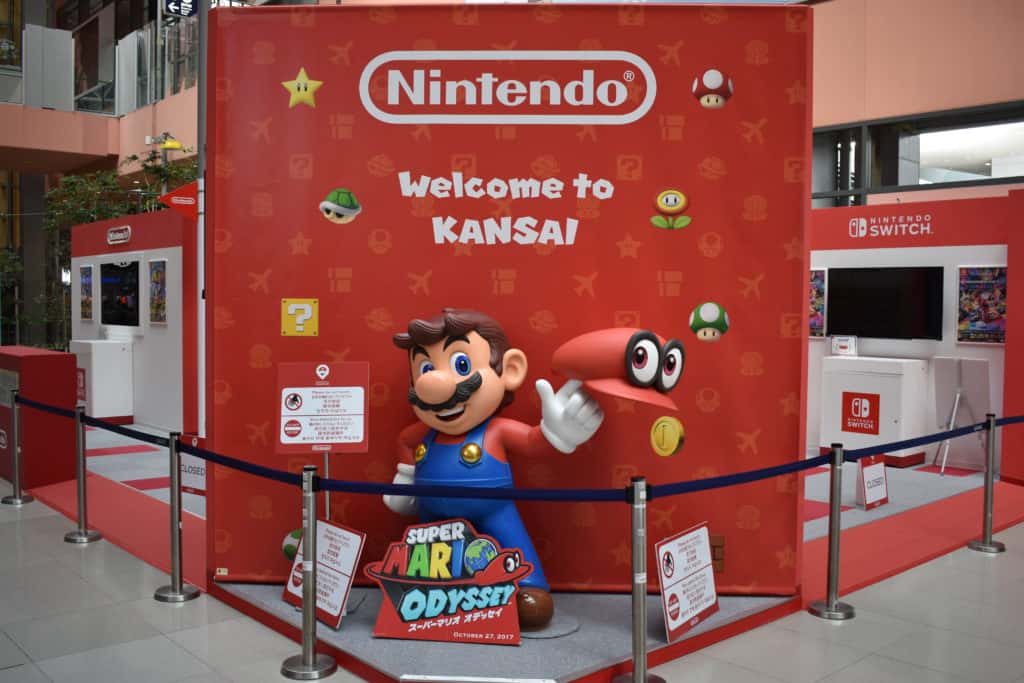
But that’s not the only thing that makes this Asian island an easy destination. You see, my sister and I added another week to our trip. When my parents flew home after our Japan trip, we boarded a flight to Bali.
And although we hadn’t expected to fly another eight hours when we started planning this summer’s holiday, it was extremely easy to get from Japan to Bali. There was a direct flight and we had no problems whatsoever in or around the airport. (We did fail to locate our Wi-Fi device when we arrived in Indonesia, but that’s another story)
Related: How to survive a long-haul flight
At the time of writing this, I’m studying multilingual communication and every single professor tells me something else about the use of the word ‘culture’. It’s being overused, it’s insensitive, it’s a man-made concept that doesn’t really exist, …
You dream it, I’ve had classes about it.
But still: before we started planning this trip, I have always had this idea of Japan as a mythical nation with sumo wrestlers, neon signs, temples and sushi belts.
I’ve always wanted to see whether that image would hold up in reality and how much of it was actually true.
Even when we had just touched down and we were waiting for our bus to the city centre at the airport, there was some kind of culture shock. I know it sounds like a bad thing, but this was more like an ‘I can’t believe we’re here and it’s so different from what I’m used to‘ vibe.
Admittedly, my dad had never gone to Japan for a holiday until we went together as a family. He was always on assignment from the company he works for, and he was always there for business.
Still, though. It was still fascinating to hear him talk about what it’s like to have ramen noodles for breakfast and to be overwhelmed by the number of people in and around the train station, on their way to work. Even just hearing him talk about what it felt like to go to a meeting with Japanese people was eye-opening.
In the twentieth century, Japan was fortunate enough to be the country where an economic miracle took place. After World War 2, the country’s economy was devastated, but it managed to grow tremendously in the period between 1945 and 1990. After this miraculous growth, Japanese demographics stagnated and the workforce dwindled, causing its economic growth to slow down.
The Japanese economy was at one point the second-largest economy in the world, beaten only by the United States. The country is still reaping the benefits of this period, and it’s now globally seen as one of the most technologically advanced countries of the world.
We wanted to see this highly technologised country with our own eyes. And we did.
Admittedly, I wouldn’t have enjoyed about 80% of the food we had in Japan if we had gone on this trip two years earlier. Luckily, we didn’t, and I did end up enjoying most of it.
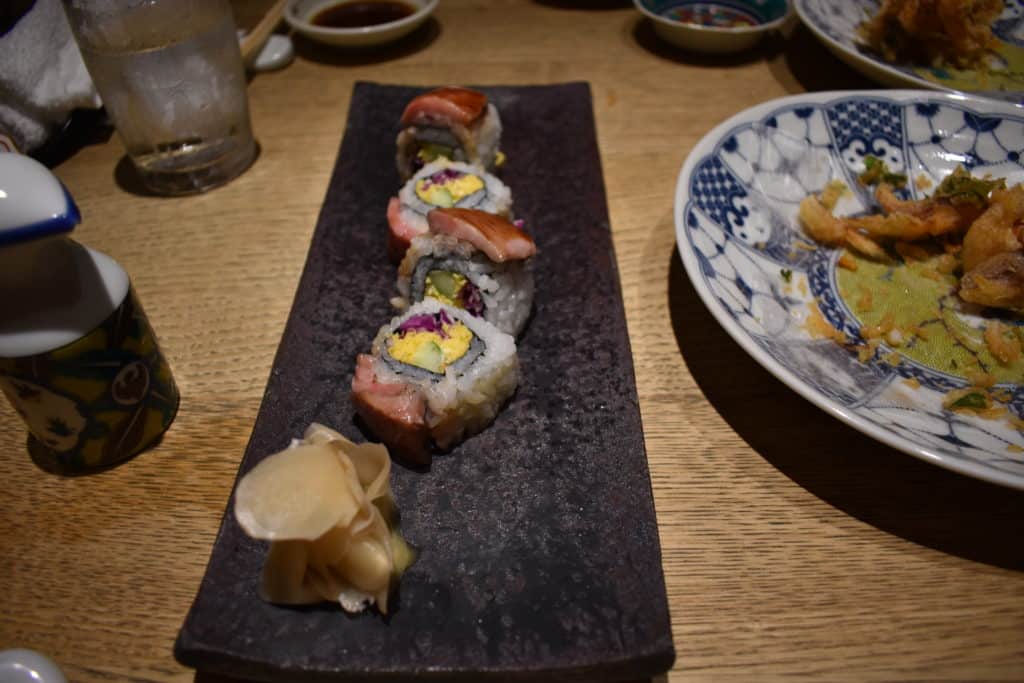
Ramen, takoyaki, sushi and sashimi, okonomiyaki, yakisoba, kakigori, … If you have no idea what I’m talking about, read more about things to know before visiting Japan and look up some pictures of these terms. You’ll want to take the first flight to Japan available.
I feel like Japan is a country that has more prejudices and stereotypes than many other countries. I’m not claiming to be an expert on their personality traits and culture (yes, communication professors, I’m using the word culture again), but I can confirm and debunk *some* of the stereotypes you might have about this country or the people that live in it.
FALSE. Admittedly, sushi is probably the most popular food of Japanese origin in the western world, but Japanese cuisine is much more than just sushi.
A typical Japanese day in terms of meals would look something like this (and yes, I realise I’m oversimplifying this a lot. Don’t sue me please, I’m only trying to convey a message.)
If you have ever experienced a typical Japanese breakfast, lunch or dinner and it’s nothing like this, there’s a comment section below this post begging for you to tell us about it.
Kawaii, as I explain below, is the Japanese concept of cuteness. Anything or anyone that can be considered ‘cute’, such as a stuffed animal, a cartoon drawing or a person, is kawaii in Japan.

Admittedly, if you spend any time in Japan, you’ll quickly find out that this culture of kawaii is much more present than in any other country on earth. However, I still wouldn’t say Japanese girls are obsessed with kawaii.
More specifically, they’re not OBSESSED with it and it’s not just the girls. Although some critics claim that the concept of kawaii has taken over the country and is now rooted in their culture, I disagree.
Also, not only girls like dressing up and being cute. In Japan, it’s acceptable for anyone to exhibit kawaii behaviour. The feeling among men seems to be split about 50-50 between guys who feel like being called kawaii is a compliment and those who would feel offended.
Okay, yes. This one is probably the most true of all.
It’s hard to judge as a foreigner, because it makes sense for any kind of people, including the Japanese, to be reserved towards foreigners. I’m reserved towards travellers when I’m in Belgium.
But still, I went in with the idea of the polite, kind and reserved Japanese person. And that was confirmed on my trip.
Although recent trends have been emerging that are changing that pattern, many people are consciously making an effort to be nice to others. Some people in Tokyo even set up a project to help the people of Tokyo become even more polite.
Japanese people bow before entering a shrine, they apologise when you run into them, they welcome you when you enter their shops, … The list goes on and on. And yes, these might seem like common courtesy to you, but I’m not used to strangers being polite to me for no apparent reason.
Also true. Then again, what’s weird to you may be normal to someone else. Not trying to judge here, but just listing some things that are less common in most western countries.
Here’s a list of some odd things we noticed in Japan:
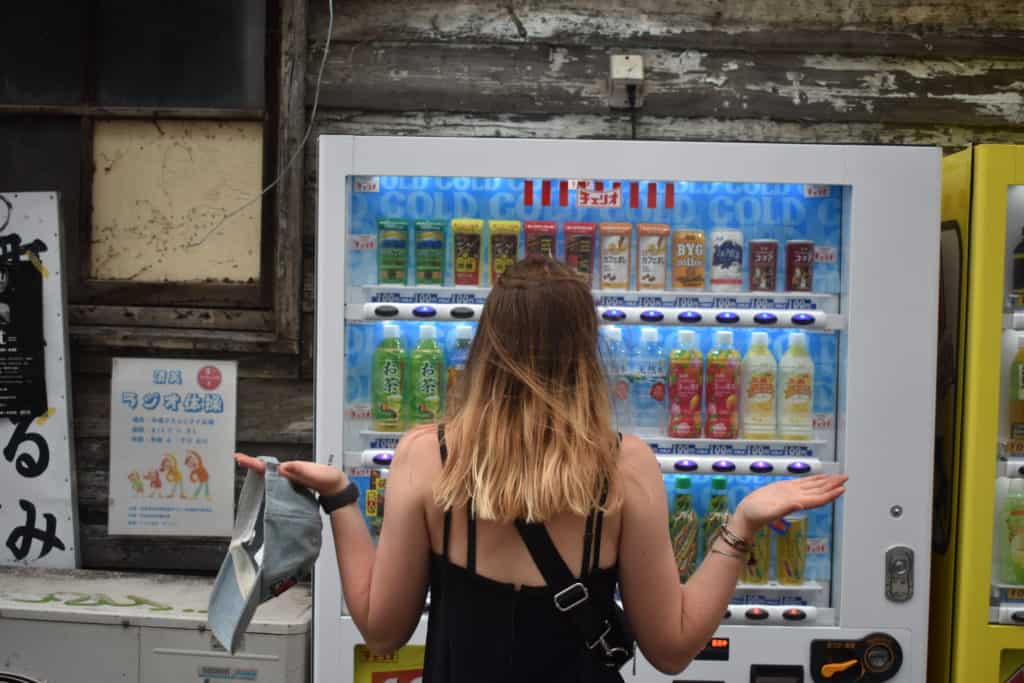
Again, true, and it’s one of the biggest problems Japan is facing nowadays. Their proportion of elderly citizens is among the highest worldwide and that will likely cause the Japanese population to shrink by 30 million in the next 30 years.
Japan is a country with a low fertility rate and a high life expectancy. The large number of old people have a big influence on social policies, such as pensions and long-term healthcare. The Japanese government has started implementing policies to restore the fertility rate and combat the ageing of its population.
Now, for something different entirely. In this last part of the blog post, I’ll try to describe my experience in Japan using the 26 letters of the alphabet, associating each letter with a word or concept that reminds me of what it was like to spend two weeks there.
What better way to start off the ABC of Japan than the Japanese way to say ‘thank you’? During my time in Japan, ‘arigatou gozaimasu’ was essentially the only Japanese expression I felt comfortable saying because it was the only expression I knew.
The religion of Buddhism was introduced to the island in 552 AD by Buddhist monks from Korea. Today, it’s one of the biggest religion in Japan, second only to the traditional Japanese Shinto religion.
The train system in Japan is insane. (See also J is for JR and what you should know before visiting Japan). According to Train-Media, approximately 20 million people commute into Tokyo every single day. Every. Single. Day.
The reason why commuting is so popular in Japan is because rent in big cities is very expensive, and especially in Tokyo prices are insanely high. As a consequence, many people decide to live in the suburbs, where rent is affordable, and commute to work every day.
As one of the most vibrant areas in Osaka, Dotonbori is one of those places that has to be included in your Osaka itinerary.
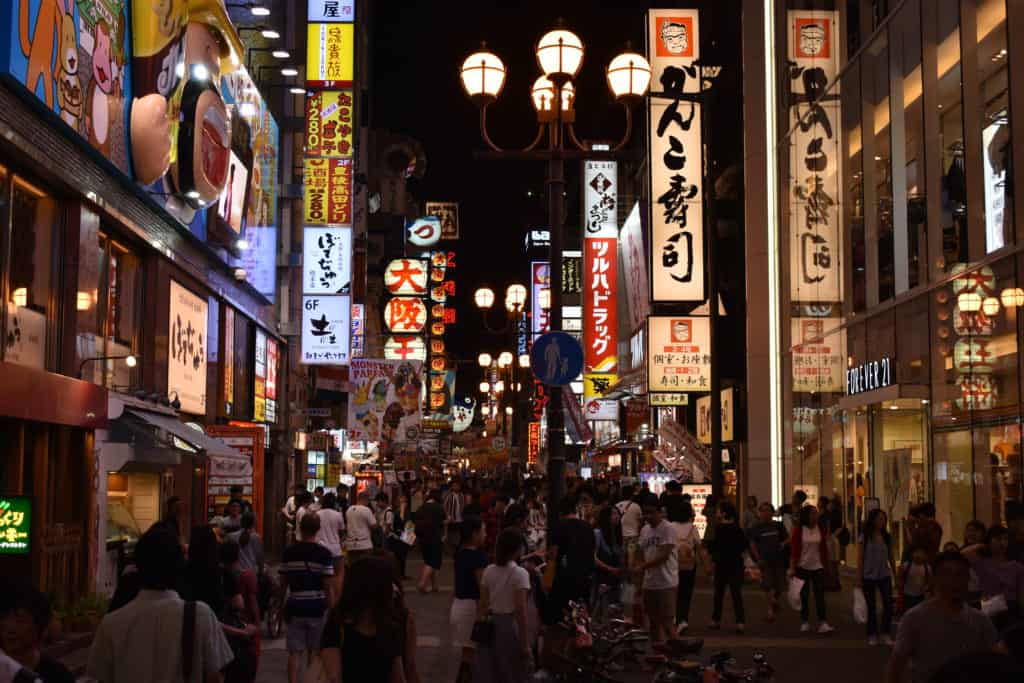
I could literally eat edamame for days. In case you’re unfamiliar, edamame are steamed immature soybeans that are served in the pod, often with salt. In Belgium, we always get a serving of edamame when we get takeout sushi and it’s uh-ma-zing.
It seems like big cities in Japan include department stores like Hankyu, Daimaru and Loft on every street corner. Every department store we visited included a full floor dedicated to food, usually the ground floor and/or the basement. These floors are known as food courts, where you can find all kinds of fresh food.
If you haven’t been to Japan before and you’re imagining what the country is like, chances are geishas are included in that image. Although you might not know the word, you’ll definitely know how they look.
A geisha, literally translated as ‘entertainer’, is a woman who wears traditional costumes and makeup and entertains people (usually men) through performing art, music and dance. Contrary to popular belief in the west, geishas are not prostitutes.
One of the most important concepts in Japanese culture, as you’ll quickly come to realise after spending some time there, is honour. It’s so important to the Japanese that they even have a linguistic system of honorific suffixes to refer to others in conversation.
In Japan, incense is burned at the entrance to every temple. There’s a special Japanese ‘way of incense’ called Kōdō. Similar to a tea ceremony – where incense is also often burned, by the way -, there are specific rules about how to prepare and appreciate incense.
Japan Rail, or JR for short, is the main means of transport on the island. It comprises seven companies that run a network of trains, spanning all the way across the country.
In case you’re wondering how JR trains work – yes, it is quite confusing – check out ‘A quick guide to taking the train in Osaka‘.
Kawaii is the culture of cuteness in Japan. It refers to anything or anyone that can be considered cute or charming. As mentioned above, kawaii is a huge part of Japanese culture and it’s ingrained in most people who live there.
They really do love their lanterns over there. As you can see in this video.
Matcha tea is the central element in traditional Japanese tea ceremonies. Matcha tea is green and has a very specific and peculiar preparation guidelines. Today, matcha is also often used to add flavour to various sweet dishes, such as ice cream, latte and mochi.
Ever wondered why Japanese cities are so big and densely populated? It’s because of nature. A whopping 73% of the country’s area is uninhabitable, which means that almost all Japanese people live on 27% of its landmass.
Of course, that means that the island has an enormous amount of nature for travellers to explore.

Osaka is the third biggest city in Japan. And it’s also a hell of an operating base for day trips due to its central location within the country. Fun fact: Osaka is known among the Japanese as the ‘nation’s kitchen’ for the many delicacies that are produced in the city.
Ahhh, pachinko. Japan’s answer to the gambling ban. Huge pachinko halls can be found in all major cities, usually on dedicated pachinko floors in arcades or as a standalone building.
The point of the game was never really clear to me, but it has something to do with small metal balls that you put into a machine and more metal balls come out. Don’t ask me.
Yes, it was very tough to find a word that started with a Q and had anything to do with Japan. Please just roll with it.
Quail farming industries provide the Japanese with meat and eggs. They’re so popular because the animals grow quickly, are easy to manage and produce eggs at a high rate. The meat serves as a viable protein-rich alternative to chicken.
When I say ramen, I’m not talking about the packets of instant ramen you can buy for 30 cents at Walmart. No, I’m talking about carefully crafted bowls of heaven-sent savoury noodle soup. I had the best bowl of ramen of my life in Tokyo. I’m not exaggerating and I’ll probably never eat ramen that comes close to that one bowl again.
Even if you’ve never heard the name before, you know what Shibuya Crossing looks like. It’s the busiest pedestrian crossing in the world, located in front of Shibuya Station, one of the main commuter hubs of Osaka.
Also: there’s a statue of Hachiko between the crossing and the station and the Starbucks café overlooking the crossing is one of the busiest in the world.
Takoyaki is a very popular street food in Japan, especially in Osaka. It consists of wheat flour-based dough, egg and minced octopus and it’s grilled on a special plate that makes it ball-shaped. I personally don’t love the taste of takoyaki, but I can see why it’s such a popular snack in Japan.
Udon, like ramen, is one of the many popular Japanese noodle varieties. It’s usually served chilled with a soy dipping sauce in the summer or in hot soups and other dishes in the winter. They’re the thickest variety of noodles that is served in Japan.
Japan wouldn’t be Japan without their world-wide image as video game pioneers. Many distinguished game companies, such as Nintendo, Sega, Square Enix and Konami, started in Japan and are still headquartered there.
Today, the fact that video gaming is such a big industry in Japan is reflected in the many enormous entertainment halls, arcades and game centres that can be found in all major cities.
Wasabi is to sushi what peanut butter is to jam. The Japanese usually serve wasabi in the form of a spicy green paste and use it as a condiment in sushi and sashimi dishes. Sushi chefs put the wasabi between the rice and the nori when preparing sushi, in order to preserve its flavour.
Again, X is an incredibly difficult letter to find words for. X-ray fish don’t really have anything to do with Japan, but if you have any suggestions for what to put here, feel free to let me know. Don’t hate me for this please.
Pristella maxillaris, more commonly known as x-ray fish, are a species of fish famous for their translucent body.
Who could have anything against me talking about Japanese food? (Hungry people who like Japanese food, Sander. That’s who.)
Yakisoba is a Japanese noodle stir-fry dish that mainly consists of soba noodles, oyster sauce, pork and vegetables. This was one of the first Japanese dishes I came in contact with as a kid and I loved it right away. I still love it just as much today, if not even more so.
Seems like a nice place to end this blog post. Zen. Do I really need to explain this?
Japan is the country of sushi belts, Shibuya and Starbucks. If you’re still not convinced of the country’s intrinsic value as a tourist destination after reading this, there’s really nothing else I can tell you.
To everyone who made it all the way to the end of this blog post, thank you very much for taking the time to read everything.
What’s your favourite letter in the ABC of Japan? Let me know in a comment!
Thanks for reading!
-S
PIN IT!



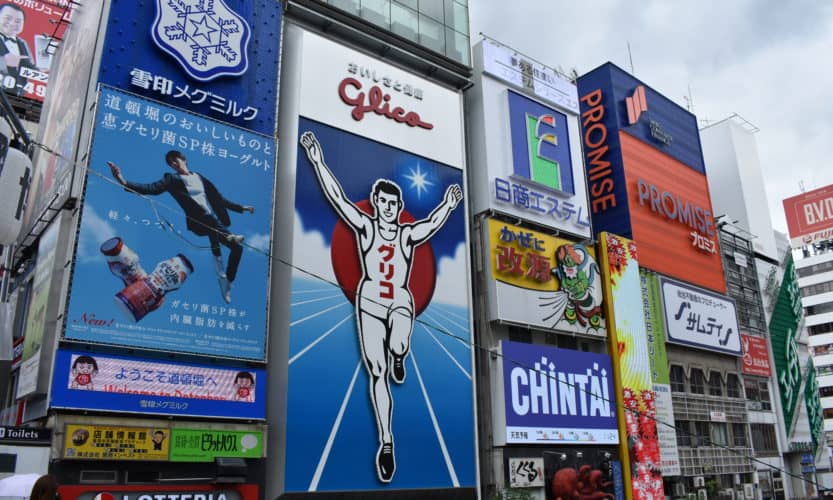
The first stop of our big Japan trip this summer was Osaka. With its population of nearly 2.8 million people and its reputation as one of the biggest foodie cities in Japan, it’s no surprise that it’s such a popular tourist destination. This is how we spent five days in and around Osaka.
Disclaimer: if you’re going to Osaka and you’re looking for a five-day itinerary, you might not be able to fully follow this one. It includes three day trips and some events that aren’t freely accessible to everyone. It should, however, get you a pretty good idea of the main things you need to do.
Click one of the links below if you’re only interested in a specific part of this itinerary!
Day 2: Dotonbori (Osaka) & Bon Odori Festival
Day 4: Hiroshima & Miyajima day trip
You can also check out the map below for every specific location mentioned in this blog post.
Our flight from Brussels Airport departed at 10 am. We had one short layover in Frankfurt, where we arrived at 11:15 am. After another flight – my first ever long-haul flight, by the way – we arrived in Osaka at 8 am.
Before you ask: yes, I felt jet-lagged, but it wasn’t nearly as bad as I had expected.
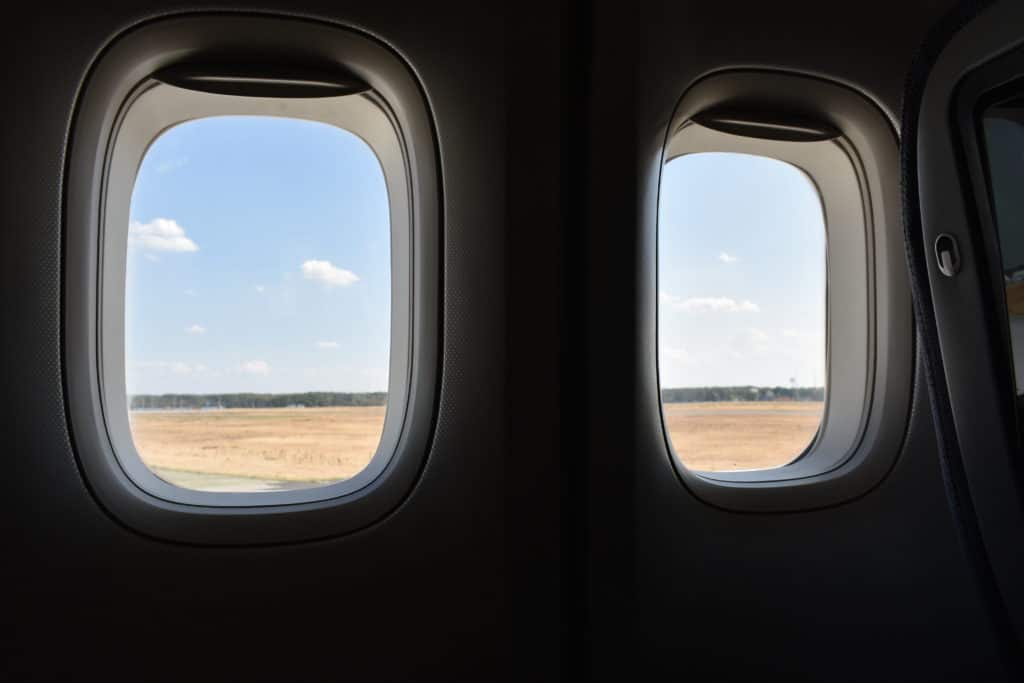
After my dad picked up the mobile WiFi device he had ordered beforehand, we boarded a bus that took us to one of the main bus stations of Osaka. From there, we had a short (but exhausting) walk ahead of us.
I assure you, I’d rather walk for an hour in decent conditions than do that fifteen-minute walk again. Just saying.
We eventually made it to our Airbnb around 1 pm, but we weren’t officially allowed inside until 3. Luckily, a lady was cleaning the apartment and let us in to drop our bags before we set out to explore the city.
New to Airbnb? Get $35/€30 off your first booking through this link!
One of the first things we saw (mainly because it was right around the corner from where we were staying) was an indoor shopping arcade called Tenjinbashi-suji. Of course, we had no idea what it was called at the time, but I found out afterwards.
This arcade featured quaint side streets, boutique shops, small cafés and pachinko and slot machine establishments.
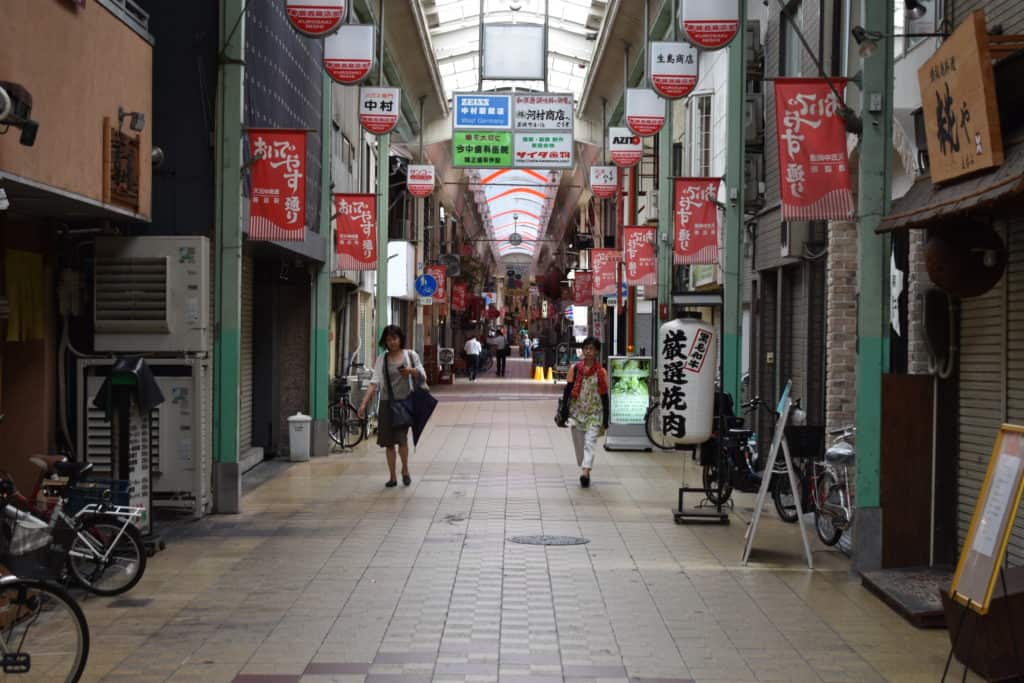
Fun fact about pachinko: it’s the Japanese response to western slot machines and a nifty way around the government’s ban on gambling for cash. Also, the pachinko market in Japan generates more gambling revenue than Las Vegas, Macau and Singapore combined. Madness.
Anyway. Around 3 pm, we decided to try to find unique flavours of candy in a convenience store near our Airbnb. As in most convenience stores around the world, I assume, there was an entire section dedicated to candy and cookies. However, the exciting part in Osaka is that – assuming you don’t speak Japanese – you have nothing to go off except the illustrations on the packaging.
We picked up some candy and sweets and headed back to the Airbnb to dump our stuff and freshen up before heading back to the city.
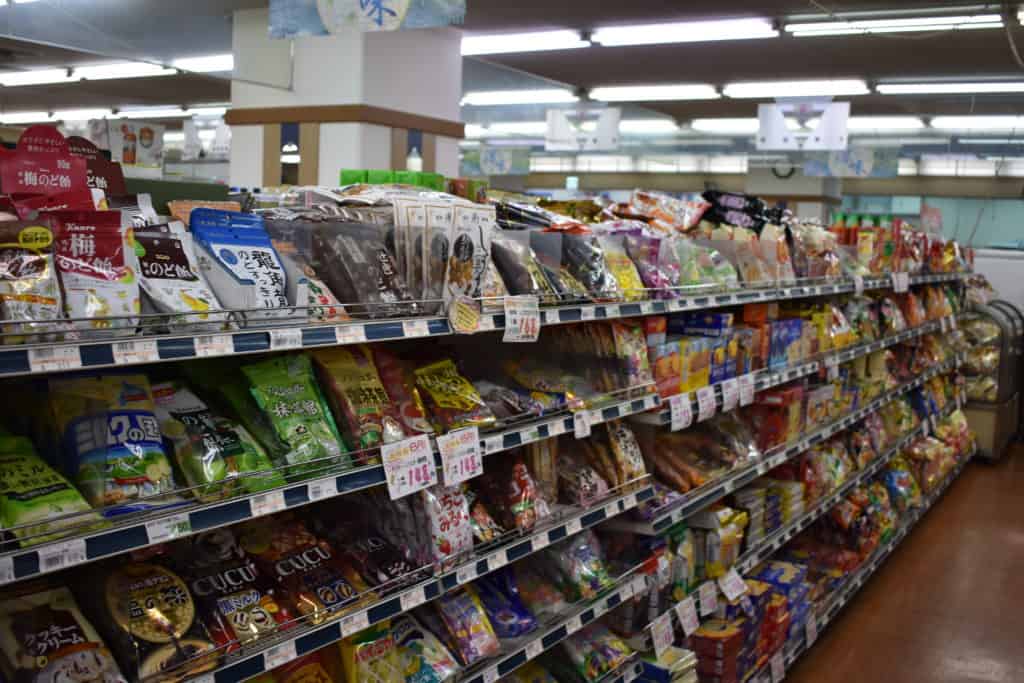
After spending some time at the apartment to unwind, we went back to the city to explore some more. We found a business card at our Airbnb promoting a nearby coffee shop called Haiku Coffee, so we decided to go there.
I wasn’t able to find a website, but they do have a Facebook page and you can find their contact information by just Googling “Haiku Coffee Osaka” (or just click this link).
When we entered the coffee bar we saw that there was only one big table in the middle of the establishment and we were the only guests. The waiter was very kind and tried his very best to tell us some stories in English. The coffee was freshly made and tasted great.
Now that we got our coffee fix, we walked around some more and really took in the atmosphere of Osaka.
My parents then went back to the apartment and my sister and I set out to take some pictures to keep our Instagram followers happy. Afterwards, we went back to the apartment as well and then we all went out for dinner together.
Earlier, as we were walking through Tenjinbashi-suji, we had noticed a small restaurant on one of the corners. It looked very secretive and it was hidden away behind bamboo sliding doors.
The first time we walked past, the doors were open and there was a man (we would later find out he was one of the cooks) standing outside. My dad asked him if we could make a reservation for that night, and so we did.
Fast forward to 7 pm, when we had our first Japanese dinner experience.
As soon as we sat down at our table and got our menu, we realised that the chef didn’t speak any English. And neither did any of the waiters or other kitchen staff. On top of that, there are no pictures on the menu at all, so we have to resort to using Google Translate to let the chef know he can “surprise us” with anything. And he did.
The Japanese businessmen sitting at the bar, talking to the staff, were seemingly very amused at our struggle to order food.
We ended up getting an assortment of mostly raw fish, pickled vegetables and other foods that didn’t have the structure they were supposed to have. All in all, not a bad meal, but not the best.
One advantage of this experience is that I can now say I’ve had dinner in Japan where I mostly had no clue what I was eating. Two years ago, that would have been my worst nightmare. I’m definitely adding that to my mental ‘crazy travel experiences’ list.
On day two, we had our first experience with the Japanese public transport system called Japan Rail. It was a very welcome change to the public transport system in Belgium, where trains and buses often run late or they don’t even arrive at all.
In Japan, everything is very well organised. Trains mostly come on time, and if they are delayed, that information is spread efficiently and quickly.
Although our experience with this Japanese system was very pleasant, it was still quite confusing. In order to make it easier for you to take the train in Osaka, here’s a concise guide.
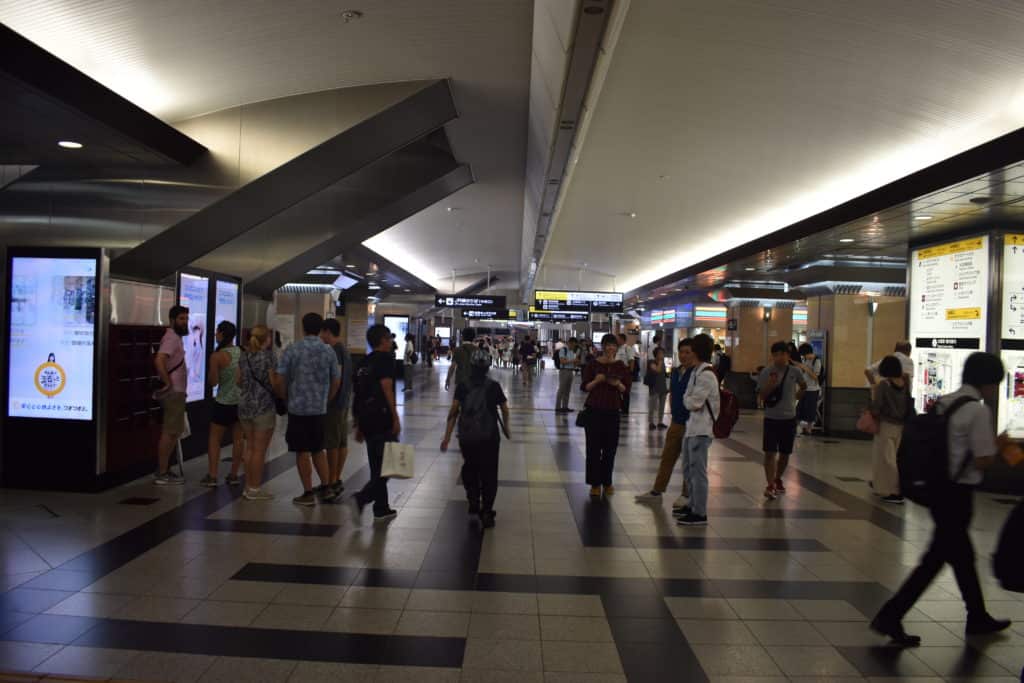
There are five categories of trains in Japan:
With the exception of the last category (Shinkansen trains), most JR lines offer all categories of trains. For example, if you’re going from Tokyo Station to Shinjuku Station, you can take a local train, a rapid train, an express train or a limited express train. This is one of the main reasons why you’ll probably never have to wait for a train for longer than ten minutes in Japan.
Information about Japanese trains is displayed both in Japanese and in English on information boards in the train stations, so you should have no problem locating your train.
As I covered in “Things You Should Know Before Visiting Japan“, I highly recommend that you get a JR Pass if you’re staying in Japan for seven days or more. You’ll probably be travelling around quite a bit, which means that train fares will definitely add up if you don’t have a JR Pass. It’s also important to know that you can’t buy a JR Pass in Japan, but you have to order it online before going to Japan.
We had breakfast in the train station.
I know, it doesn’t sound glamorous at all, but it was actually very tasty. We found a small food store – I don’t want to call it a bakery because they weren’t, you know, baking anything – in the station. Everything looked delicious and the smells reminded me of going to a bakery on Sunday morning and immediately smelling the fresh buns that just came out of the oven.
We bought some fresh croissants and a whole assortment of other buns. While we were deciding which buns were going to give us a sugar rush that morning, my dad had gone to Starbucks to pick up some coffee to go with our breakfast.
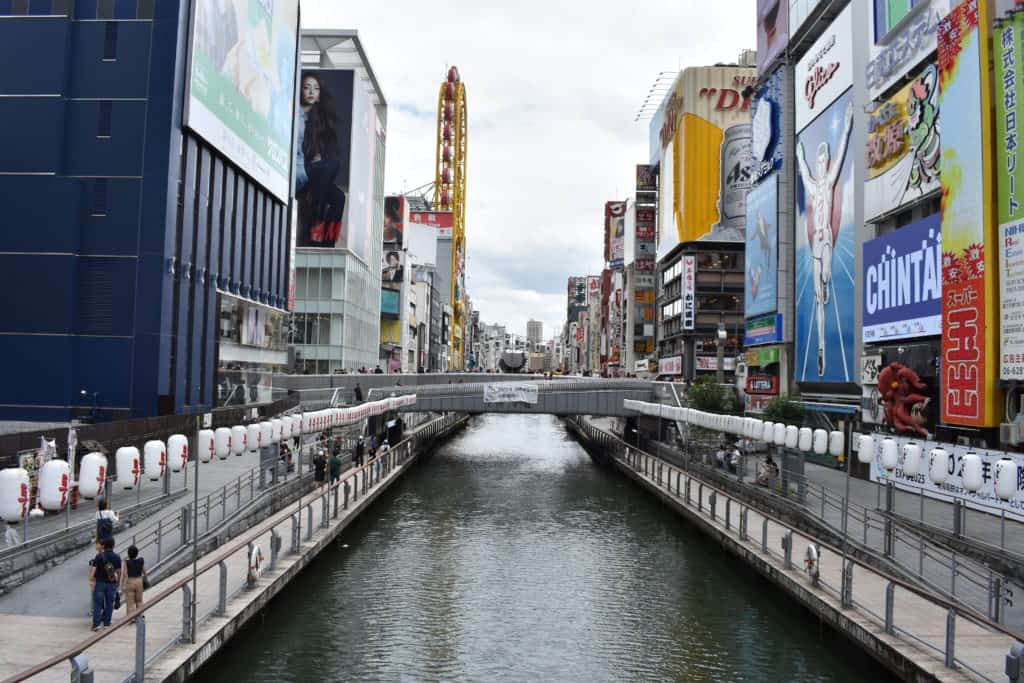
When I tell you that no Osaka itinerary would be complete without including Namba and Dotonbori, I’m not just exaggerating. You really do have to see the neon signs, the flocks of people and the flashing advertisement panels for yourself.
However, chances are that you have no idea what I’m talking about. In that case, allow me to introduce you to the pinnacle of modern Japanese culture.
Namba is one of the districts of Osaka’s Chūō ward, located very centrally within the city. Among locals, it’s known as one of the major entertainment districts of the city, as it’s home to many of Osaka’s most popular restaurants, bars, clubs and arcades.
Within Namba, the Dotonbori area is one of Japan’s major tourist attractions. So yes, there will be many tourists if you’re travelling during high season, but I strongly believe that it’s worth the visit and that the tourists even add to the experience.
You might have heard of the Glico Man. Well, you guessed it: you can find the Glico Man sign in Dotonbori. It’s the only sign in the area that hasn’t been changed since its original installation in 1935. The sign depicts an athlete on a blue track, who is meant to convince the world of the power of Glico candy.
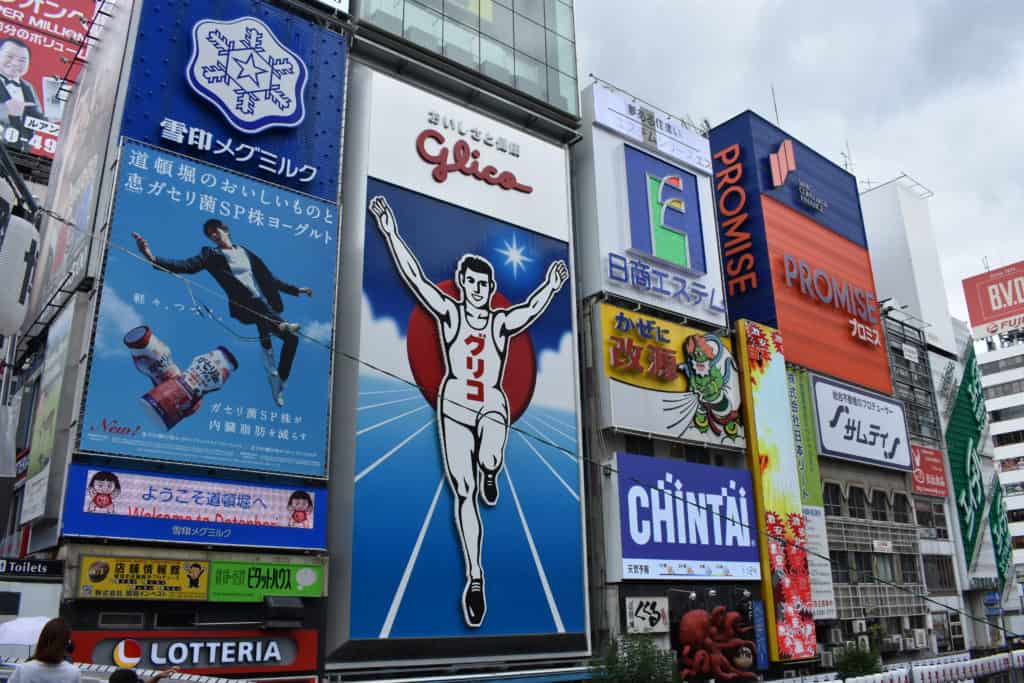
After spending the morning in awe of the busy streets of Namba and Dotonbori, we decided it was about time to get lunch.
Looking back on it now, this meal was probably one of the most wholesome, most impromptu decisions we made during our two weeks in Japan.
As you’ll soon come to learn, all major cities in Japan are filled to the brim with department stores. Some of the biggest and most famous chains are Loft, Mitsukoshi, Daimaru and Hankyu. These department stores usually have a basement floor (sometimes even two entire floors) that is entirely dedicated to food. They’re like big indoor food courts that still remind you of outdoor food markets when you’re walking through them.
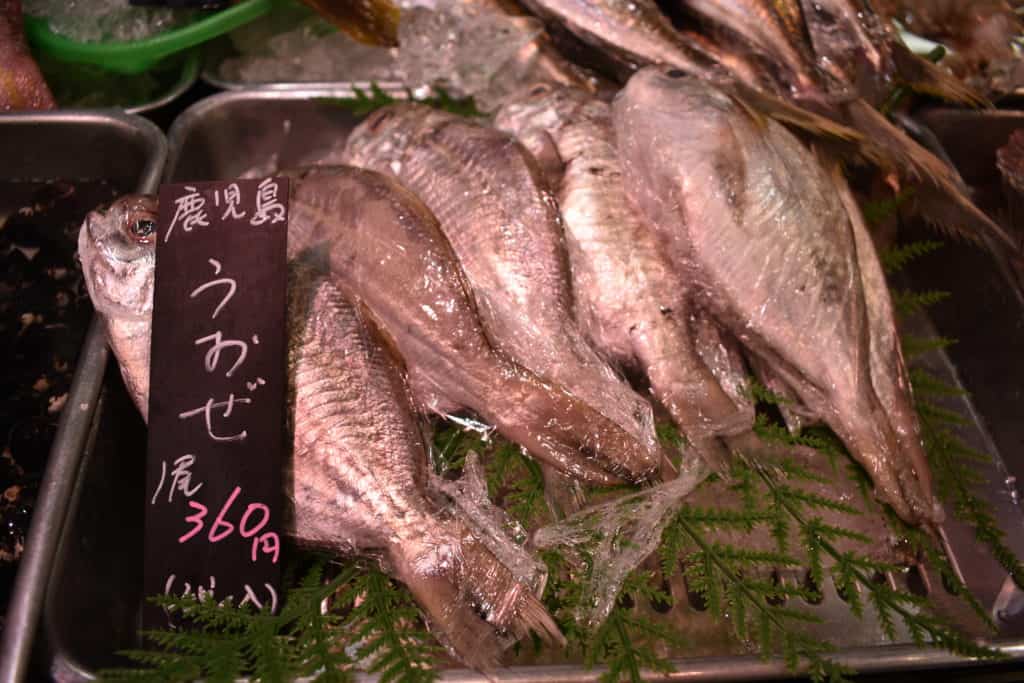
We went to one of the department stores in Osaka and we bought sushi, vegetable salads and raw meat. We took our bag, which was filled to the brim with delicious Japanese food, and we took the elevator up to the 14th floor, where we found a lunch garden rooftop terrace that was mostly empty.
And so, we sat down on the ground, opened up our boxes and we had lunch overlooking the Osaka skyline. Let me tell you: the food was great, the view was better and my company was the best.
Side note: I also got a kick-ass clip for my first Japan travel video! (The one right after the beat drops where my sister and I jump in the air, 1:47 in the video)
All stuffed up from lunch, we took the elevator back to the ground floor and returned to Namba. I filmed some footage for the travel video and we spent some time trying to find the perfect spot for the ‘Gram. After that, we returned to the Airbnb to freshen up before the big event of that day: the Bon Odori Festival.
Now, if you’re reading this blog post to get an idea of what you can do during your stay in Osaka, it’s very unlikely that you’ll be able to follow along for this part. My apologies for that.
At this point, I’m about 90% sure that you’re thinking “But Sander, what is a Bon Odori Festival?”. To explain that, we have to go back to the meaning of Bon (or Obon).
Obon is an annual Buddhist event to commemorate one’s ancestors and honour their spirits. A Bon Odori Festival, literally translated as “Bon Dance Festival”, is an event that is entirely based around Obon. There are food stands where you can hear yakitori sizzling on the fire, stalls where you smell the garlic from fresh gyoza and many other food and drink related stands.
If you ever get lucky enough to experience Bon Odori Festival for yourself, I highly recommend you locate a food truck that sells kakigori. This is essentially just shaved ice and coloured syrup in a cup, but it’s so much fun to eat and it actually tastes like something other than ice. The main reason I like kakigori so much is probably that it reminds me of the kakigori I ate at the company Bon Odori Festival back in Belgium when I was a kid.
Other than the whole food truck situation, there’s usually a big square stage in the middle of the festival grounds. On this stage, people are singing and dancing, and when the time comes for the Bon Odori, people form circles around the stage and start dancing themselves. If you can’t imagine anything that looks like this, I put a short fragment of it in the video.
My dad works at a Japanese company. He has travelled to Japan for work a lot over the past few years, and when we decided to go to Japan on holiday, he quickly found out that there would be a Bon Odori Festival organised by the company on our second day there.
Side note: companies aren’t usually the ones who organise these festivals. The company my dad works at does it every year and they make the new employees help in the organisation. Also, new employees are responsible for the entertainment, which means that they were dancing on the stage for the majority of the night. You can also see this in my travel video (and it’s one of my favourite shots in there!)
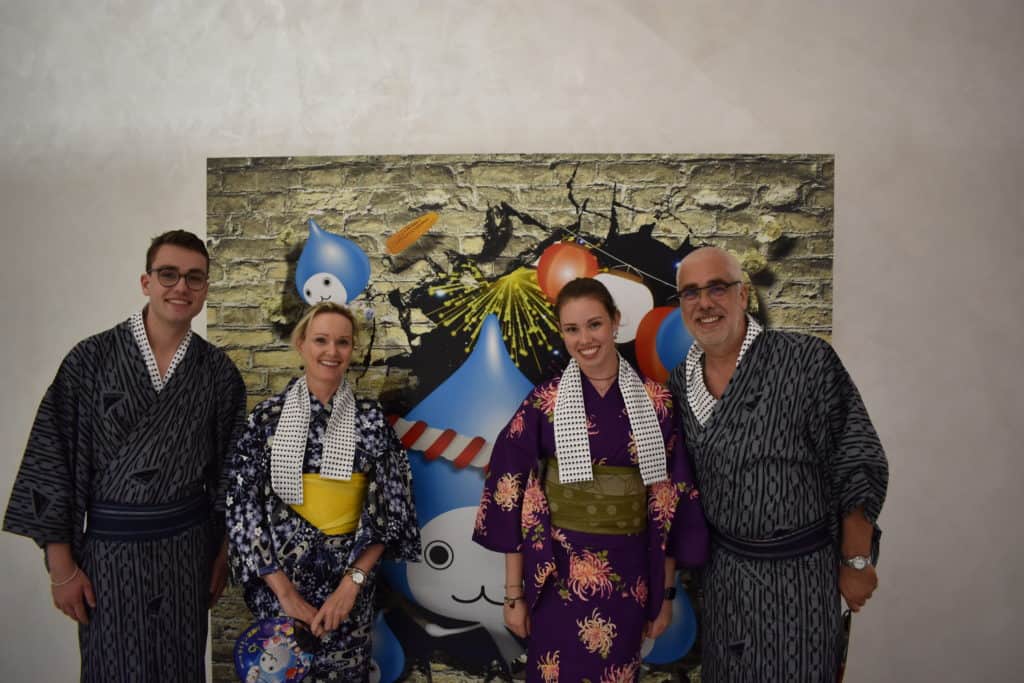
Once we realised that we were going to this festival, my dad arranged for us to get traditional Japanese clothing so that we wouldn’t stand out against all the Japanese people in our regular jeans and t-shirt. This festival was surreal to experience as a westerner and I’m very thankful to my dad for giving us this opportunity.
On day three, it’s about time for you to get out of the city and take a day trip to Nara. Again, no Osaka itinerary would be complete without mentioning the beautiful city of Nara, which was Japan’s first capital city back in the eighth century.
Music tip: listen to Arrival in Nara by alt-J while planning this day trip. It’s ridiculously good.
The main thing Nara is famous for is the deer which roam around freely through the crowds of awe-struck tourists. You might have heard that they walk around the city, but that’s not true. The deer mostly stay within Nara Park. Not to worry, though: this is still an enormous park and you won’t even be able to see all of it.
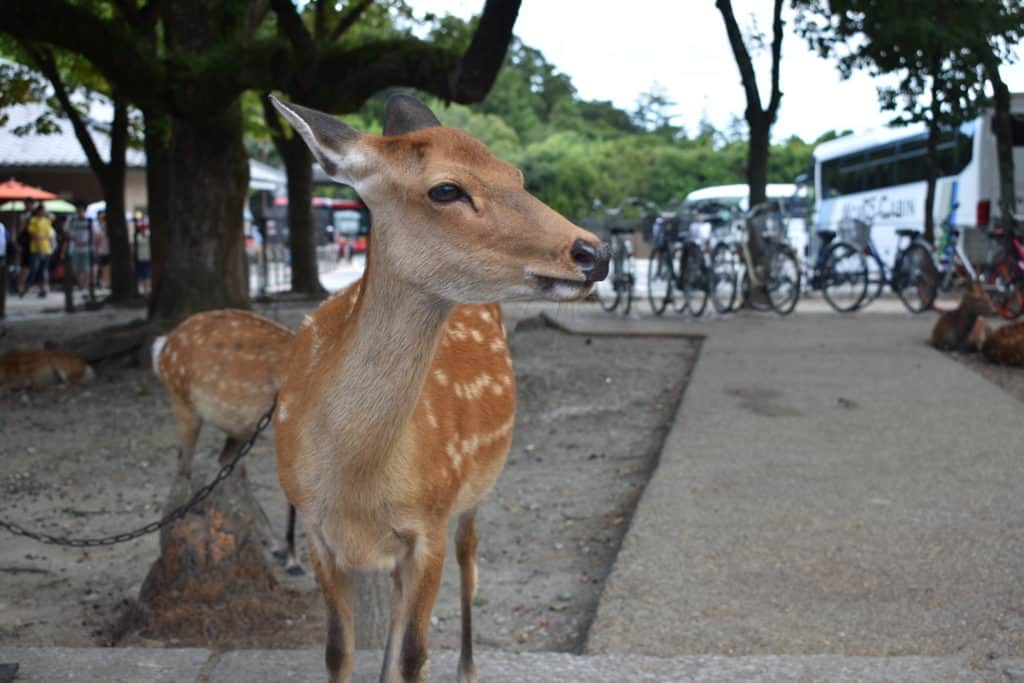
At the entrance of the park, you might feel like you’ve made a terrible mistake and you’ve fallen for a tourist trap. That’s to say, there are a LOT of tourists here. But many of them don’t bother to wander deeper into the park after visiting the main temple, so you’ll probably have more deer to yourself if you do just that.
When we were in Nara, we had a local guiding us. As my dad works at a Japanese company, like I mentioned earlier, he used to have a boss who was born in Nara. This man’s name was Mr Egawa and he left the company a few years ago, but he gladly agreed to guide us around his hometown.
The first place you should visit after getting over the initial realisation that you’re sharing the pathway with thousands of wild deer is Todai-ji Temple. This temple is one of Japan’s most famous temples and it has great historic significance.
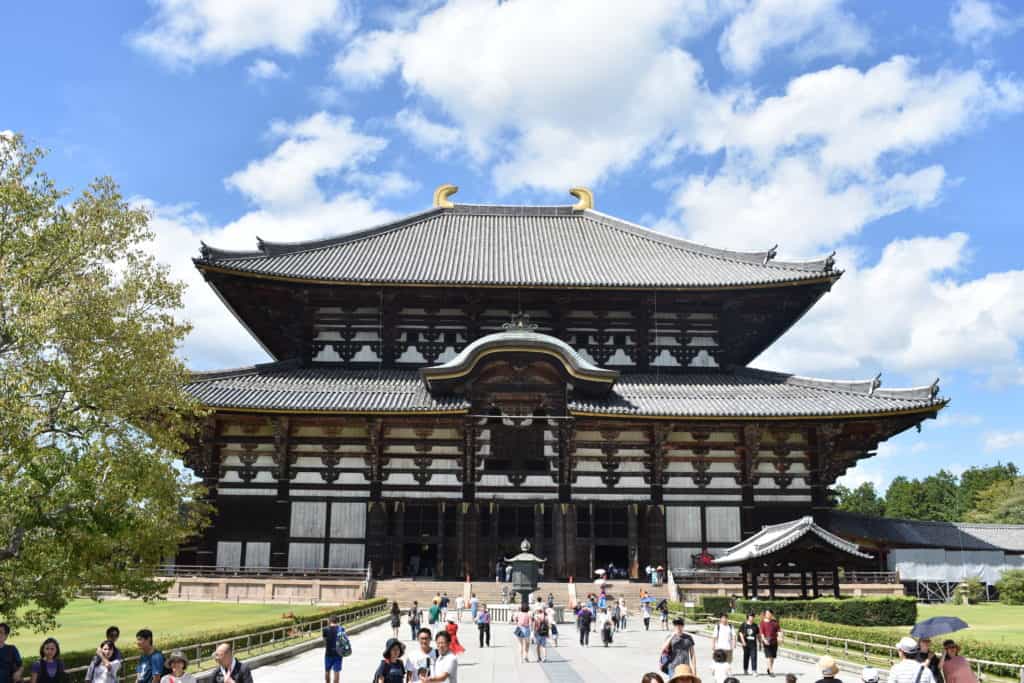
The name might not ring a bell, but what if I told you that this temple is home to one of the biggest Buddha statues of Japan? And what if I told you that the temple is the biggest wooden building in Japan? You’d deem it worth a visit, right?
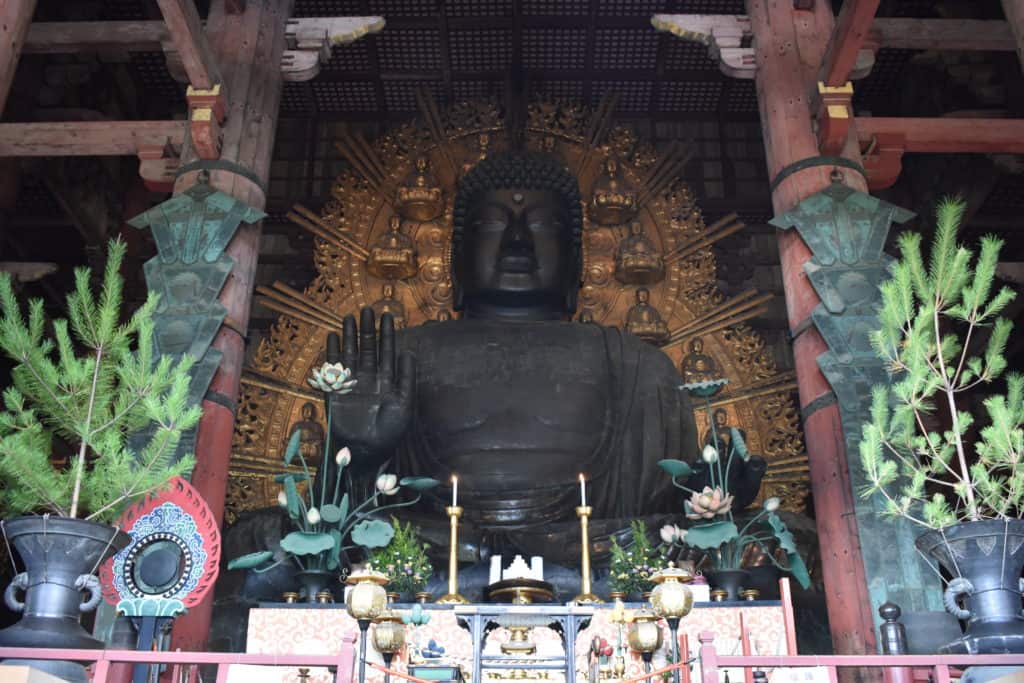
After gazing at the immense statue of Buddha and walking around the temple, cautious not to fall for any palm reading or fate prediction scams, you’re going to walk along the path for a little while until you get to Nigatsudo Hall.
So, you’ve seen the main attractions of Nara park and you want to get away from the tourists and still see some amazing things. I’ve got just what you need: Nigatsudo Hall.
This hall is located at a four-minute walk from Todaiji Temple (and it’s actually a part of the Todaiji Temple complex), so you’ll get there in no time. Many other travellers don’t take the time to visit this place, because they really only want to see the huge Buddha statue. While that’s fine, you wouldn’t be reading this post if that’s all you were interested in.
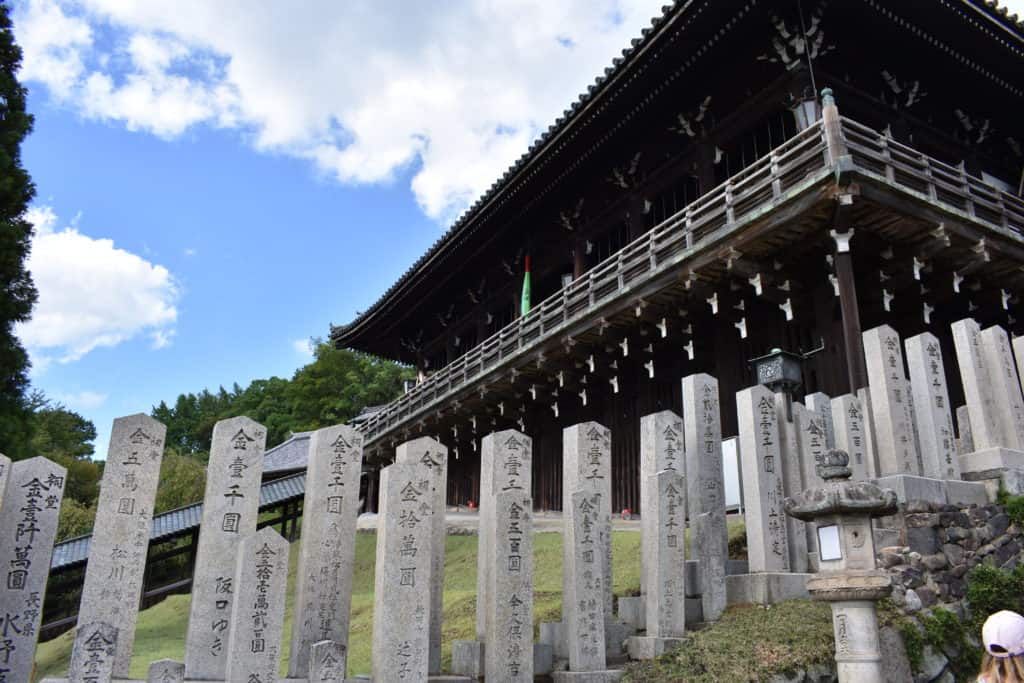
The pillars you can see in the picture above were constructed in honour and gratitude to people who made sizeable donations for the construction and upkeep of the temple complex. The smaller pillars were constructed for anyone who donated the equivalent of $1,000. Their big brothers can range anywhere from $1,000 to $100,000. Our Japanese friend told us that the symbols that are engraved in the stones are names of the families that donated.
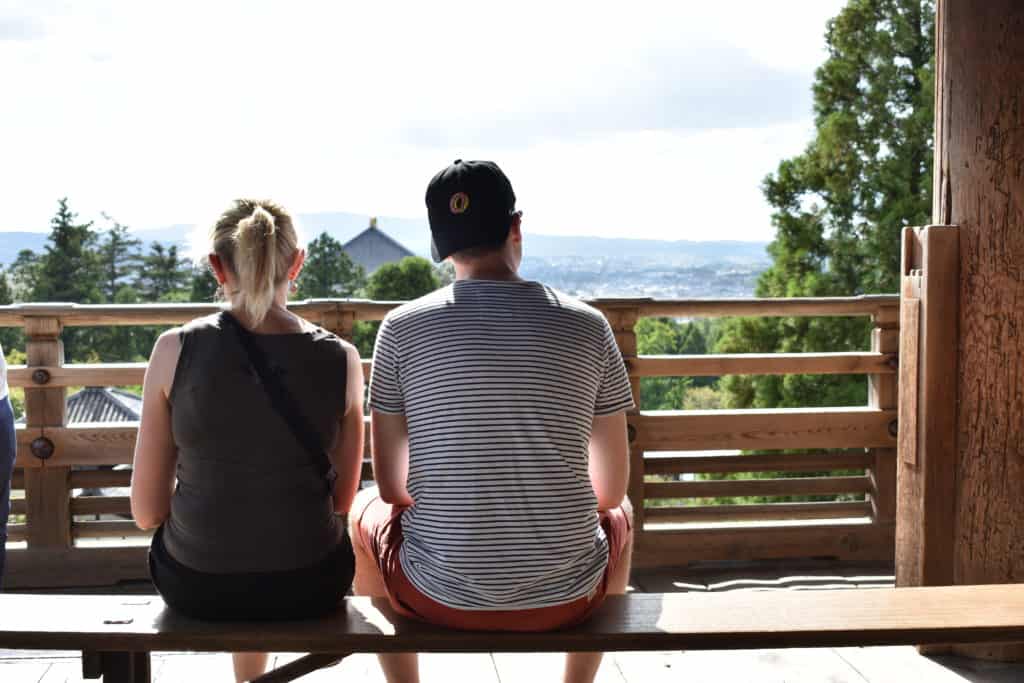
Bonus: if you do decide to go to this part of the temple complex, you’ll be able to take kick-ass pictures like the one above.
I also highly recommend that you wander around Nigatsudo Hall for a while. There are small paved pathways that make you feel like you’ve travelled back in time to imperial Japan, where you’re exploring an abandoned city.
Now it’s time to make your way to the other side of the park. By now, you’ve probably reached the late afternoon and you’ll want to rest somewhere idyllic. Boy, do I have the perfect location for you.
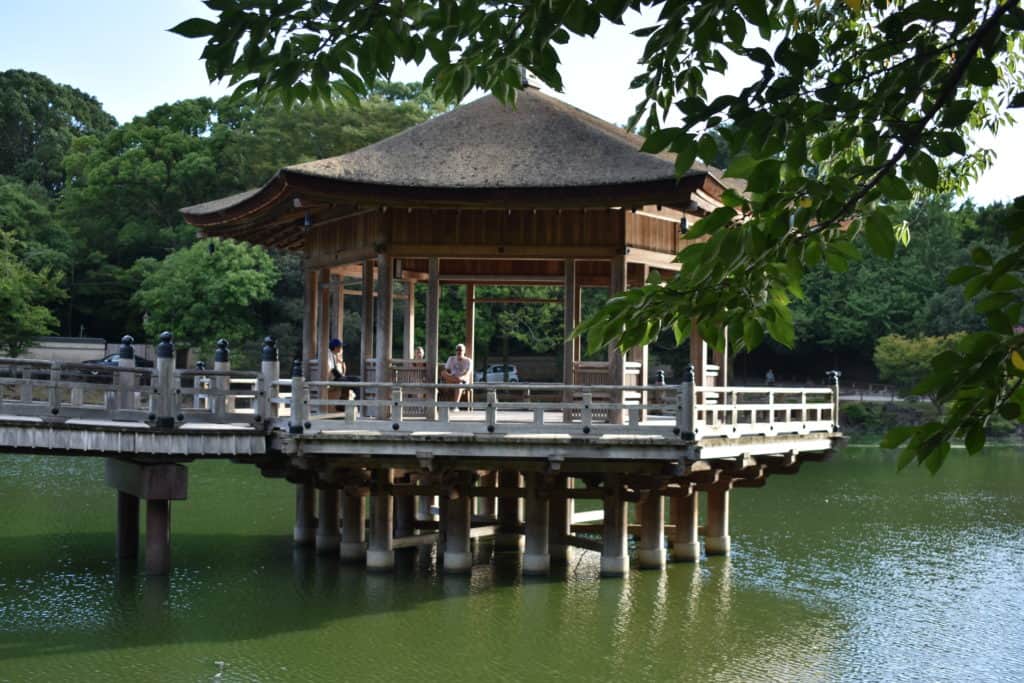
This little thing is called Ukimido Pavilion. It’s the perfect place to sit down for a while, catch a breath and listen to the sounds that nature produces. My sister and I also, you guessed it, walked around the pavilion in search of hidden Instagram spots. What do you know? We found them. I’ll let you discover them for yourself, though. Be sure to tag me on Instagram if you find them!
After discovering the fascinating hidden past of Japan, chilling with deer on a grass field and taking plenty of pictures, you’ll head back to the city of Nara for dinner.
We had a reservation at a restaurant just outside the city centre with Mr Egawa and his daughter Yuri. She spent a few years studying in Belgium (go figure!). As we were waiting for Yuri to arrive at the restaurant, we realised that it wouldn’t open until 6 pm. And that’s the story of how we ended up in a bar in Nara that used empty shopping carts as tables and empty barrels as chairs.
We all gulped down a refreshing drink and then made our way to the restaurant. The food was great, but I had the feeling that it was something like ‘Westernised Japanese food’. I’m not even sure whether or not that makes sense, but oh well.
After dinner, we really got to experience what it’s like to walk through Nara at night. Mr Egawa and Yuri took us to one of their favourite places in the city: a small lake that was located right in the city centre.
At that time of day, there were several lanterns that lighted up the area around the lake. People were unwinding and picnicking after a long day of working hard. The whole thing was kind of surreal: it was an extremely relaxing experience in a country that never seems to sleep.
Our fourth day in Osaka was another day trip. This time, we went to Itsukushima Shrine on Miyajima Island and Hiroshima. If you want to do the same, here’s how you should go about it.
First off, you’re going to want to take the Tokaido-Sanyo Shinkansen train from Shin-Osaka Station to Hiroshima Station. There you’ll transfer to the San-Yo JR Line bound for Miyajimaguchi Station.
Again, I can’t stress enough how much I recommend getting a JR Pass. Especially if you’re going to do as many day trips as we did. A JR Pass will significantly cut your transport expenses in Japan. For your reference, a return trip to Hiroshima would set you back about 20,000 yen (equivalent of about €170 / £150 / $190). A 14-day JR Pass that gives you unlimited trains and Shinkansen rides would cost 46,000 yen (€360 / £320 / $410).
Anyway. You’re in Miyajimaguchi Station now. From here, you can take the ferry to Miyajima Island, which is where you’ll find Itsukushima Shrine. This ferry is covered by your JR Pass, but be careful to go through the JR entrance when boarding the ferry.
Starting off with what is probably the main reason you’re interested in Miyajima: Itsukushima Shrine. The huge Torii gate that seemingly floats on the water at high tide. At low tide, it’s possible to walk all the way to the foot of the Torii gate and admire it from up close.
I know, it’s tough to schedule your visit based on the weather and the tides. But if you arrive at the island at low tide and you have some spare time in your itinerary, I suggest that you stay until the shrine is fully in the water.
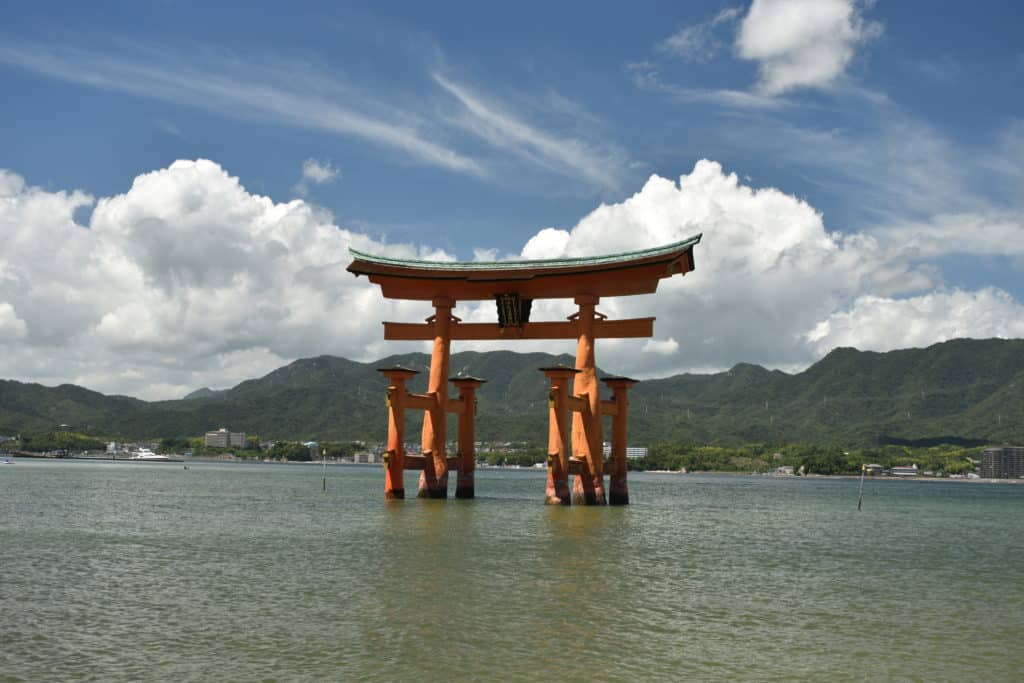
After spending some time marvelling at Itsukushima Shrine, you should make your way back to the ferry. On the way back, you’ll have a choice between a path along the water and a path that seems to go through some kind of village. Take the village route.
It’s definitely catered toward tourists, but it’s where you’ll find some deliciously prepared oysters. According to my dad, anyway. A bit further along the path, you’ll also find several food trucks that sell all kinds of grilled seafood. We tried the grilled octopus and it was delicious, although slightly chewy.
Now, for the second part of this day trip. It’s time to go to Hiroshima. Get back to Miyajimaguchi Station and take the San-Yo JR Line back to Hiroshima Station.
For anyone who has any historical knowledge, Hiroshima won’t be another intelligible Japanese name. It will be the city where the first atomic bomb fell in 1945. In the aftermath of the bomb, nicknamed Little Boy, over 100,000 civilians died. That’s why every major tourist attraction in the city has something to do with remembering the lives that were lost in that attack.
The two memorials we visited were the Atomic Bomb Dome and the Peace Memorial Park.

The Atomic Bomb Dome is the building where the bomb actually fell. This was the only building around the bomb’s hypocentre that was still standing after the bomb hit the city. It was registered as UNESCO World Heritage in 1996 as a symbol for peace.
The Peace Memorial Park is the main park of Hiroshima and it’s home to the A-Bomb Dome and various other memorial sites, museums and monuments. Nowadays, it’s a nice park to take a stroll in.
After spending a gloomy afternoon in Hiroshima, it’s time to take the Shinkansen back to the upbeat city of Osaka. More specifically, we’re going back to Namba, to check out what it looks like by night.

In our specific situation, my sister and my mom wanted to visit one of the clothing stores. My dad and I took that as an opportunity to bond over some cans of beer at the riverside. Three months later, that’s still one of my fondest memories of the whole trip.
When my sister and my mom came back from the store, we went to dinner. We opted for a small riverside restaurant that served tapas-like plates. It was a lot of fun and the food was delightful.
Yes, another day trip. Deal with it.
There are a few options that will take you from Osaka to Kyoto.
The fastest (and most expensive) option is the JR Shinkansen from Shin-Osaka Station to Kyoto Station. However, I don’t recommend this option if you don’t have a JR Pass. It’s only 9 minutes faster and it costs twice as much. If you do have a JR Pass, however, go right ahead.
The other option is to take the Kyoto JR Line from Osaka Station or Shin-Osaka Station to Kyoto Station. Preferably, you’ll want to take a Special Rapid train, which will only stop at Osaka, Shin-Osaka, Takatsuki and Kyoto.
The first thing you’ll probably want to visit is the infamous Arashiyama Bamboo Grove. You know, the forest with the tall bamboo trees. Starting from Kyoto Station, it takes one more train ride to get there. Take the San-In JR Line bound for Sonobe and get off at Saga-Arashiyama Station. From there, it’s only a short walk away.
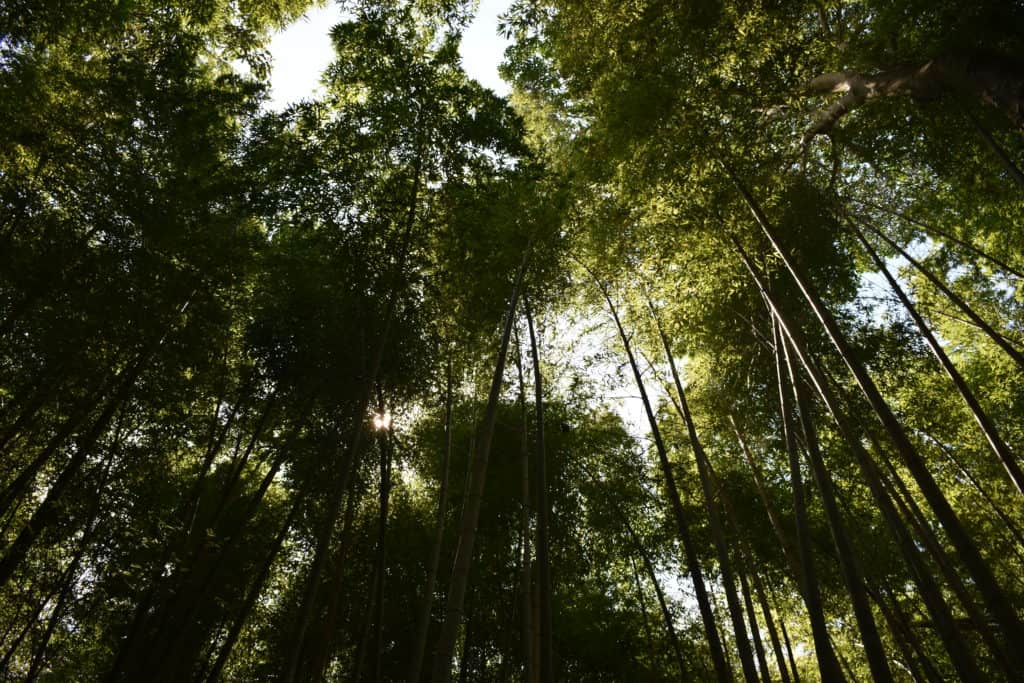
This forest is in a similar situation as Nara Park: it might seem like there are many tourists, but there are so many hidden corners (which are just as magnificent as the main pathway is) that you won’t have a problem finding them. Venturing off the beaten path has never been easier.
By the way, here’s a quick tip if you’re trying to get good pictures of yourself in the bamboo forest. Get the person who’s taking the picture to do it from a low perspective. That way, it’s much easier to make it seem like you’re the only person in the forest.
From Arashiyama Bamboo Grove, I recommend going to Fushimi Inari Shrine. This is one of the most famous and renowned monuments of Japan: a pathway through the mountain paved with thousands of red Torii gates.
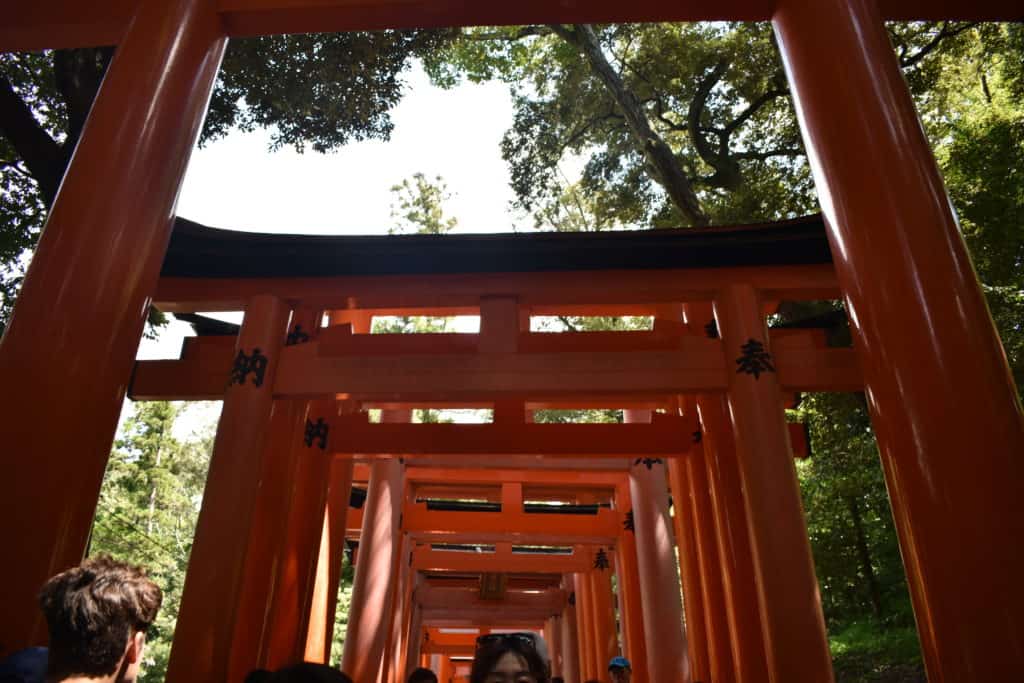
The best way to get there is to take the San-In JR Line from Saga-Arashiyama Station to Kyoto Station. There, you should transfer to the Nara JR Line to Inari Station.
Again, there will be a lot of tourists here. And again, the further along the path you go, the fewer tourists will be there with you. On the trail toward the Fushimi Inari Shrine, there are smaller shrines on the way to the top. After each shrine you pass, you will notice that a significant number of people give up. Those people decide to turn back instead of pursuing the hike to the top.
As a consequence, I recommend going as high up the mountain as you can. The entire hike to the top and back takes between 2 and 3 hours, depending on your speed.
Admission to the shrine complex is free and the complex is always open.
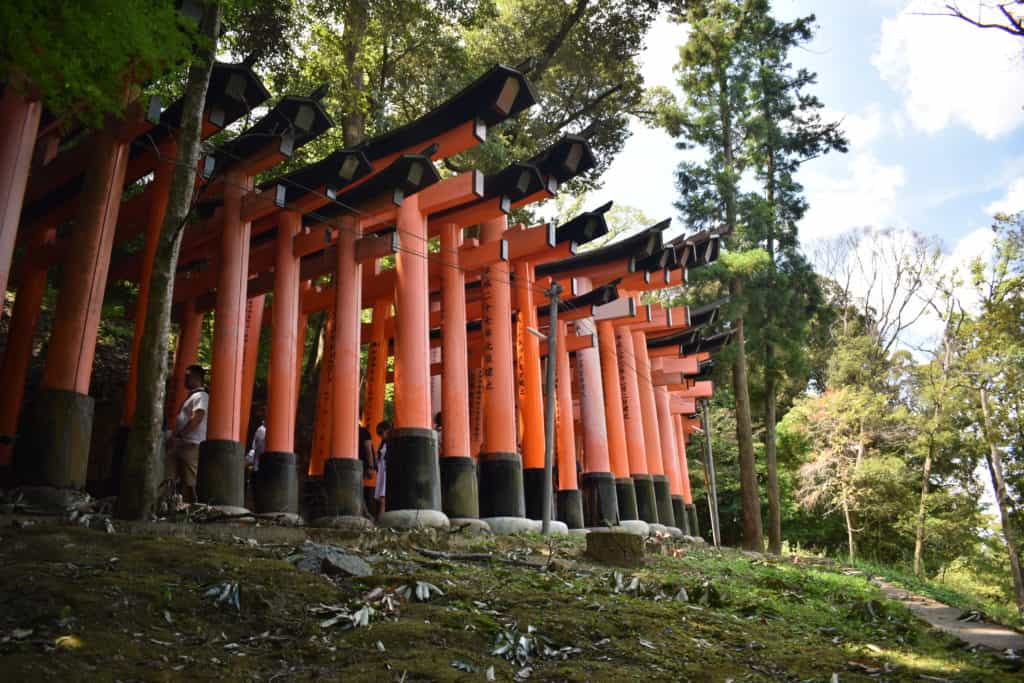
After taking a train from Osaka to Kyoto and visiting the Arashiyama Bamboo Grove and the Fushimi Inari Shrine, your morning has probably come to an end.
Now it’s time to find a restaurant for lunch. I highly recommend trying out okonomiyaki – a savoury pancake filled with a variety of ingredients – at one of these restaurants.
When you’re all lunched up and ready to go, head on over to Gion. This is the traditional Geisha neighbourhood of Kyoto. Admittedly, I had expected more of this, so I wouldn’t blame you if you skipped this and replaced it with another activity. I also won’t be able to give you directions to Gion, because that entirely depends on where you went for lunch. Just look it up on Google Maps and you’ll be golden.
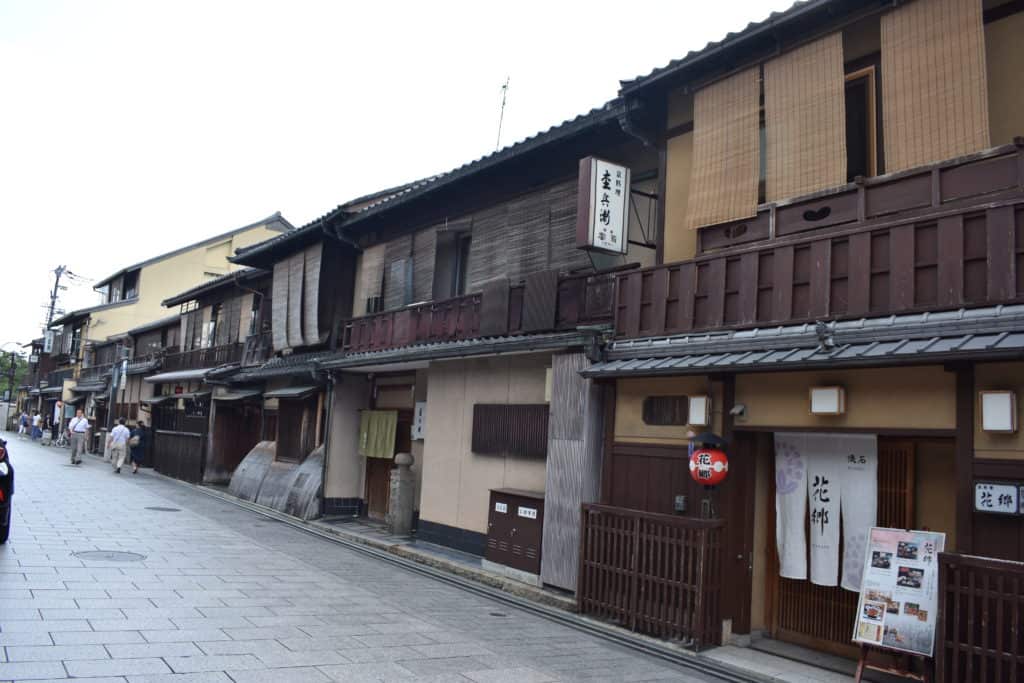
There’s a reason why I didn’t really enjoy Gion as much as I thought I would. It was very obviously aimed at foreign tourists. For example, if you see someone walking around in a yucata (traditional Japanese dress), there is no way to distinguish a genuine geisha from a tourist wearing a rental yucata.
If you are going to Gion, you might want to consider combining this visit with a leisurely stroll through Kyoto’s Higashiyama District. This district is one of Kyoto’s best preserved historic neighbourhoods.
By now, it’s about time to head back to Osaka, unwind a little and find a restaurant for dinner.
We had dinner with an Australian man named Michael who used to work with my dad. He now lives in Japan with his lovely Japanese wife and their two adorable daughters. It was very refreshing to have dinner with people who know the ins and outs of Japanese culture. Their stories about living and working in Japan fascinated me.
When this lovely get-together was over, we parted ways and my family and I headed back to the Airbnb for one last night in Osaka.
As a reader of this blog post, chances are that you’re confused. You might think something along the lines of “How dare you call this an Osaka itinerary? You were barely even there!” and I’d have no choice but to agree with you.
We didn’t spend a lot of time in Osaka. The reason is that my dad had told me that there wasn’t really that much to do there. If you feel cheated now, I sincerely apologise.
However, the point of this blog post was to inform you about our first five days in Japan.
That being said, I would love to come back to Osaka and explore the city itself, since, you know, we didn’t really do that.
In any case, I want to finish this blog post by saying this. You’re a true warrior if you got through the whole thing. I appreciate it a lot.
Thanks for reading!
-S
PIN IT!
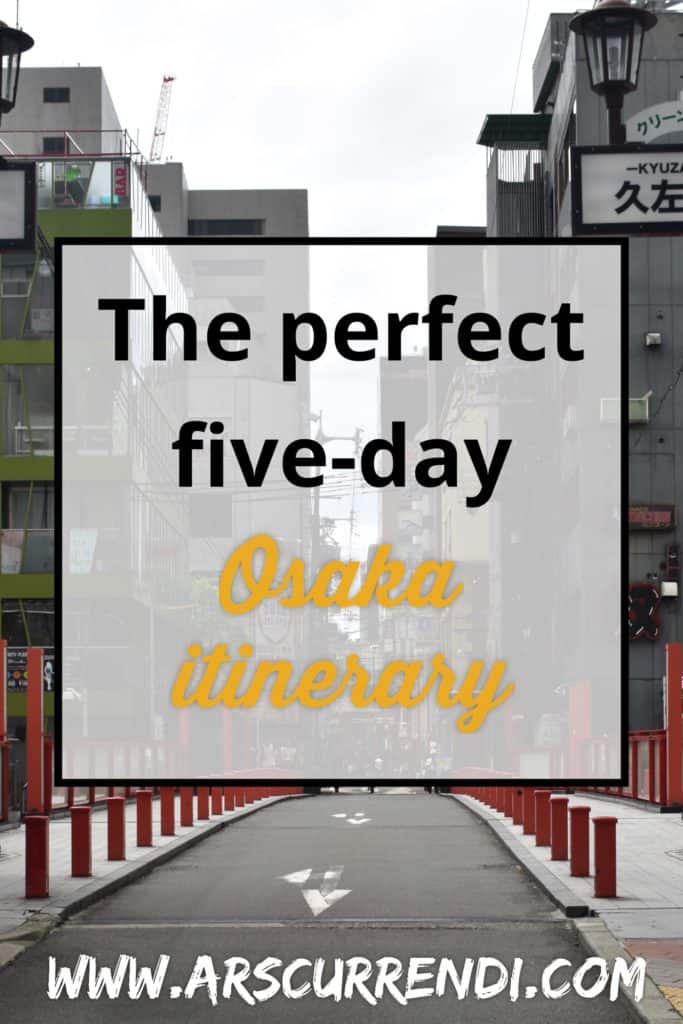
Design by NXNW.